Michael Portillo – From political hate figure to cuddly presenter
Wednesday, April 24, 2024
By Paul Whitelock
24 April 2024
 In the UK General Election of 1997, I well remember the TV coverage of the result in the Enfield Southgate constituency in the 1997 general election, at around 3:10am on 2 May 1997. The Labour Party candidate Stephen Twigg defeated the sitting MP, Defence Secretary in the Thatcher and Major governments, Michael Portillo. The thunderous look on Portillo’s face was wonderful to behold. Had there ever been such an obnoxious politician? In the UK General Election of 1997, I well remember the TV coverage of the result in the Enfield Southgate constituency in the 1997 general election, at around 3:10am on 2 May 1997. The Labour Party candidate Stephen Twigg defeated the sitting MP, Defence Secretary in the Thatcher and Major governments, Michael Portillo. The thunderous look on Portillo’s face was wonderful to behold. Had there ever been such an obnoxious politician?
Introduction
From villain to saint, from zero to hero; has there ever been such a dramatic conversion in the history of mankind? Saul to Paul on the Road to Damascus comes close, I guess.
 Michael Portillo, the epitome of a right-wing nasty politician, this son of a Spanish republican in exile from his homeland and a Scottish mother, has transformed himself into a well-liked travel presenter and occasional benign political commentator. Michael Portillo, the epitome of a right-wing nasty politician, this son of a Spanish republican in exile from his homeland and a Scottish mother, has transformed himself into a well-liked travel presenter and occasional benign political commentator.
Nowadays Miguel Portillo lives in Carmona near Sevilla in Andalucía. He is a fluent Spanish speaker and has returned to live in the country of his father’s birth.
The politician
Michael Denzil Xavier Portillo, known on his passport as Miguel Portillo y Blyth, was born in Bushy, Hertfordshire, in 1953 (currently aged 70) and was first elected to the House of Commons as an MP in 1984
He became Chief Secretary to the Treasury under Margaret Thatcher and subsequently Employment Secretary. He was Defence Secretary in John Major’s government following the demise of “The Iron Lady”.
He was forthright and controversial and not popular, but he was a Tory in a safe seat, the Enfield Southgate constituency. Until 1997 when he and most of the nation were “gobsmacked” when he was ousted by Labour candidate Stephen Twigg. Nobody saw that coming.
The “train guy”
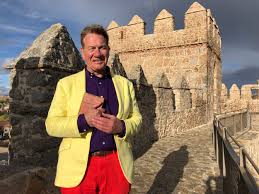 He got a gig as the presenter of a travel programme using the train network, first in the UK and then abroad. There is a memorable programme where he travels on the Al Andalus Express and calls in on Ronda, the town where I have lived for over 15 years. He got a gig as the presenter of a travel programme using the train network, first in the UK and then abroad. There is a memorable programme where he travels on the Al Andalus Express and calls in on Ronda, the town where I have lived for over 15 years.
He has now moved on to be host of a new TV programme called 'Andalucía con Michael Portillo', a production by AMC Networks International in which he tours southern Spain, now his home.
The “old” life
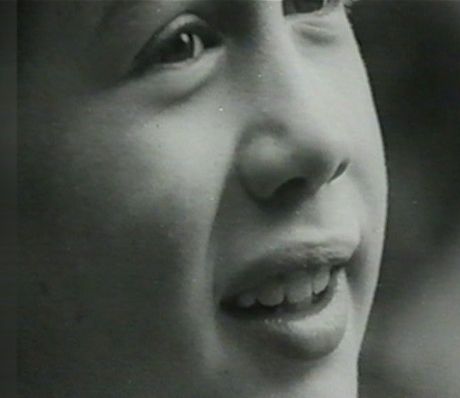 After starring, at the age of six, in a TV commercial for the drink Ribena, Michael Portillo obtained a first class degree in history from the University of Cambridge. He began his working life as a graduate trainee with the transport company Ocean Group plc, before joining the Conservative Research Department in 1976. After starring, at the age of six, in a TV commercial for the drink Ribena, Michael Portillo obtained a first class degree in history from the University of Cambridge. He began his working life as a graduate trainee with the transport company Ocean Group plc, before joining the Conservative Research Department in 1976.
First elected to the House of Commons in 1984, Portillo served as a junior minister under both Margaret Thatcher and John Major, before entering the Cabinet in 1992 as Chief Secretary to the Treasury.
He was promoted to Secretary of State for Employment in 1994.
A Thatcherite and a Eurosceptic, he was seen as a likely challenger to Major during the 1995 Conservative Leadership election, but did not stand, and, as a reward, was subsequently promoted to Secretary of State for Defence.
Portillo unexpectedly lost the hitherto safe Conservative Enfield Southgate seat at the 1997 general election. This led to the coining of the expression "Portillo moment".
Returning to the Commons in the 1999 by-election in Kensington and Chelsea, Portillo rejoined the frontbench as Shadow Chancellor of the Exchequer.
Standing for the leadership of the party in 2001, he came third behind Iain Duncan Smith and Kenneth Clarke.
He retired from the House of Commons and from active politics at the 2005 general election.
His membership of the Conservative Party has since lapsed.
His high profile led to constant attention from the media, including Private Eye, which mockingly referred to him as "Portaloo".
A New Life
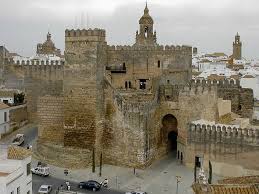 Now living in Carmona, near Sevilla, Portillo has fashioned a new life. He is a well-respected travel presenter. In an interview given to journalist Rosa Palo of Diario Sur, published on Sunday 21 April 2024, he talks of his two lives, first as a politician and then as a TV presenter. Now living in Carmona, near Sevilla, Portillo has fashioned a new life. He is a well-respected travel presenter. In an interview given to journalist Rosa Palo of Diario Sur, published on Sunday 21 April 2024, he talks of his two lives, first as a politician and then as a TV presenter.
He reminisces about his father, Luis Gabriel Portillo, a republican politician in Spain, who sought exile in the UK as Franco came to power in the 1939.
He also talks about his new television venture 'Andalucía con Michael Portillo', a production for Spanish TV in which he tours southern Spain.
Fluent in Spanish he now lives in Carmona and enjoys his time with local friends. He plans to stay put when he retires.
“Me encanta la vida que tengo y no puedo pensar en variarla,” he says in his perfect Spanish. (I love the life I have and cannot imagine changing it).
© Paul Whitelock
Acknowledgements:
A1 Translations
Diario Sur
Rosa Palo
Wikipedia
Tags:
1997 general election, A1 Translations, Andalucia, 'Andalucía con Michael Portillo’, Cambridge, Carmona, Chief Secretary to the Treasury, Commons, Diario Sur, Enfield Southgate, Eurosceptic, House of Commons, John Major, Kensington and Chelsea, Luis Portillo, Margaret Thatcher, Michael Portillo, Ocean Group plc, Paul Whitelock, Peterhouse, “Portaloo” "Portillo moment", Private Eye, Ribena, Ronda, Rosa Palo, Secretary of State for Defence, Secretary of State for Employment, Stephen Twigg, Thatcherite, “The Iron Lady”, Wikipedia
 0
Like
Published at 6:33 PM Comments (0)
0
Like
Published at 6:33 PM Comments (0)
Montejaque “gets the bird” (festival)
Tuesday, April 23, 2024
By Paul Whitelock
Tuesday 23 April 2024
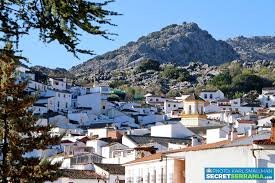 For the first time the small village of Montejaque (Málaga – pop. 980) has played host to the Andalucia Bird Festival. For the first time the small village of Montejaque (Málaga – pop. 980) has played host to the Andalucia Bird Festival.
Over the course of three days last weekend, the festival offered talks, walks and so much more in the Centro de Deportes of this village in the Serrania de Ronda on the edge of the Sierra de Grazalema.
This area is on the migration route of hundreds of bird species, many of them quite rare.
Pre-amble
With wide coverage in the local, regional and national press, the organisers, including Englishman Peter Jones, president of the Andalucia Birdwatching Society, and long-time resident of the area, were delighted.
Here are some translated extracts from Ronda-based journalist Vanessa Melgar’s recent article In regional newspaper SUR. Vanessa also writes for local newspaper Ronda Semanal.
Andalucía Bird Festival 2024
 Montejaque was the epicentre of ornithology this past weekend. This small town in the Guadiaro valley, in the Serranía de Ronda, is one of the best places for birdwatching, an activity with an increasing number of enthusiasts, both nationally and internationally. Montejaque was the epicentre of ornithology this past weekend. This small town in the Guadiaro valley, in the Serranía de Ronda, is one of the best places for birdwatching, an activity with an increasing number of enthusiasts, both nationally and internationally.
Montejaque celebrated for the first time its Andalucía Bird Festival and hopes it will become a regular feature and a benchmark of this important sector.
Friday 19 April
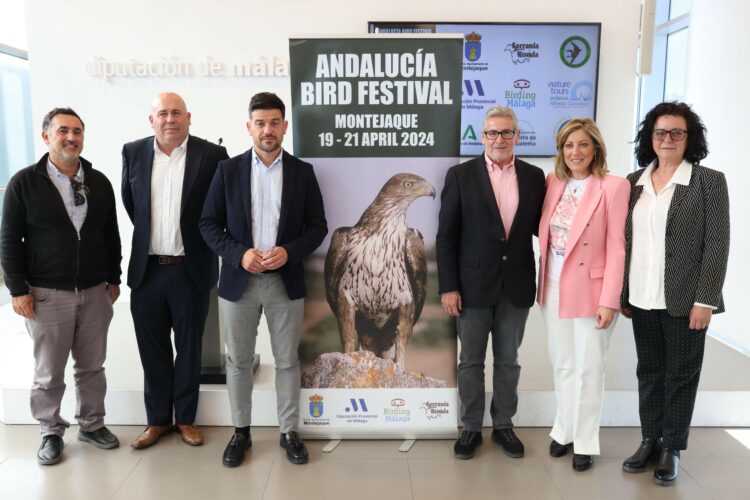 On Friday, the festival was inaugurated by Patricia Navarro, the delegate of the Andalusian Government in Málaga; José Antonio Víquez, the delegate for the Environment; Cristóbal Ortega and María del Carmen Martínez, the provincial deputies for the Environment and Economy respectively; and Diego Sánchez, the mayor of Montejaque. Also present were, among others, Alfredo Carrasco, a specialist ornithology guide and head of the company Nature Tours Andalucía and the afore-mentioned Peter Jones, both heavily involved in the organisation of this event. On Friday, the festival was inaugurated by Patricia Navarro, the delegate of the Andalusian Government in Málaga; José Antonio Víquez, the delegate for the Environment; Cristóbal Ortega and María del Carmen Martínez, the provincial deputies for the Environment and Economy respectively; and Diego Sánchez, the mayor of Montejaque. Also present were, among others, Alfredo Carrasco, a specialist ornithology guide and head of the company Nature Tours Andalucía and the afore-mentioned Peter Jones, both heavily involved in the organisation of this event.
The festival ran for three days until last Sunday. The dates were chosen to coincide with the migratory passage of birds from Europe to Africa, flying over Montejaque and the Serranía de Ronda to the Strait of Gibraltar.
The festival comprised a range of activities including conferences, exhibitions, workshops, ringing birds, making nest boxes and field trips.
"The conservation of natural heritage is in itself a gold mine of development and the fight against depopulation," said Navarro, while highlighting the need to support ornithological tourism.
"It is an activity that has aroused great interest in the last two decades with a type of visitor aware of nature conservation.”
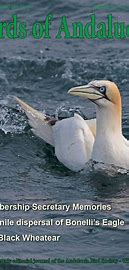 In the province of Málaga you can observe around 300 species of birds, an attraction that attracts hundreds of tourists, especially foreigners mainly British, with an average age of 50 years, also interested in the flora and the rest of the fauna in general. In the province of Málaga you can observe around 300 species of birds, an attraction that attracts hundreds of tourists, especially foreigners mainly British, with an average age of 50 years, also interested in the flora and the rest of the fauna in general.
The best times to enjoy this activity are autumn and spring. The most common species are vultures and flamingoes. The province also has wetlands that are nesting points.
In and around Montejaque it is possible to see the wheatear, the crested lark, the stonechat, the booted eagle and also the rare and much sought-after Bonelli's eagle.
Saturday 20 April
On Day 2 of the festival, Saturday, the programme started with a route, which allowed observation of birds in the surroundings of El Pantanillo and concluded in the evening with another walk in the surroundings of the Cueva del Hundidero and the Presa de los Caballeros.
There were also presentations by Jacinto Segura, Stewart Finlayson, Keith Bensusan, Antonio Román-Muñoz and Jesús Pinilla. There was also a children's workshop of crafts, drawings and face-painting.
Sunday 21 April
On Sunday, the event continued with a bird-ringing workshop in the morning and another route through the area of the Cueva del Hundidero and the Presa de los Caballeros; a children's workshop on making nest boxes; the award ceremony of a photography contest and discussions led by Tim Appleton, director of the Global Bird Fair-UK; Miguel González and Eva Bratek, herself a former resident of Montejaque. After that the documentary film Aguilucha: The Indomitable Spirit was presented.
The Festival concluded with another observation walk through El Pantanillo.
Conclusion
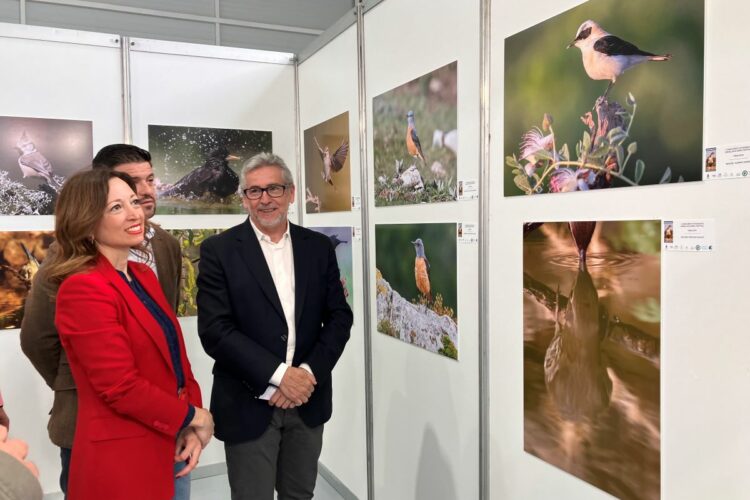 As a resident of Montejaque for many years, I commend mayor Diego Sánchez and his team, for their efforts in boosting the tourism profile of the town. As a resident of Montejaque for many years, I commend mayor Diego Sánchez and his team, for their efforts in boosting the tourism profile of the town.
This festival is just one of the many projects which have been introduced over the years to enhance the offer. Two new car parks, the Mirador, the Caminito and the current project to turn the abandoned Guardia Civil barracks into a hostal for walkers are just some of the steps that have been taken.
Montejaque looks forward to hosting the second Andalucia Bird Festival in 2025.
A round of applause to Peter Jones and Alfredo Carrasco for their enthusiasm and involvement in this inaugural event; to the regional politicians for their support; as well as to guests Tim Appleton, Miguel González and Eva Bratek for their contributions.
© Paul Whitelock 2024
Acknowledgements:
Alfredo Carrasco
Andalucia Birdwatching Society
Ayuntamiento de Montejaque
Diario Sur
Karl Smallman (main photo)
Peter Jones
Vanessa Melgar
Wikipedia
www.andalucialive.com (photo)
Further reading:
Birds of Andalucia (quarterly magazine published by the Andalucia Bird Society)
El Sistema Hundidero-Gato by Manu Guerrero Sanchez [Editorial La Serrania]
Las aves de la Serrania de Ronda [Editorial La Serrania]
Sierra de Grazalema (Map and Guidebook) [Editorial Penibética]
The Cookbook and Village Guide (El Libro de Cocina y Guia del Pueblo) by Carolyn Emmett [self-published]
Valle del Guadiaro by Manuel Becerra Parra [Editorial La Serrania]
Walking in Andalucia by Guy Hunter-Watts [Cicerone Press]
Walking in the Ronda Mountains by Tony Bishop and Eva Bratek [Editorial La Serrania]
Tags:
Aguilucha: The Indomitable Spirit, Alfredo Carrasco, Andalucia Bird Festival, Andalucia Birdwatching Society, Antonio Román-Muñoz, award ceremony, Ayuntamiento de Montejaque, Caminito, Carolyn Emmett, children's workshop, Cicerone Press, Cueva del Hundidero, Diario Sur, Diego Sánchez, Editorial La Serrania, Editorial Penibética, El Libro de Cocina y Guia del Pueblo, El Pantanillo, El Sistema Hundidero-Gato, Eva Bratek, Global Bird Fair-UK, Guardia Civil barracks, Guy Hunter-Watts, Jacinto Segura, Jesús Pinilla, Keith Bensusan, Las aves de la Serrania de Ronda, Manuel Becerra Parra, Manu Guerrero Sánchez, Miguel González, Mirador, Montejaque, nest boxes, ornithology, Paul Whitelock, Peter Jones, photography contest, Presa de los Caballeros, Ronda Semanal, Sierra de Grazalema, Stewart Finlayson, SUR, The Cookbook and Village Guide, Tim Appleton, Tony Bishop, Valle del Guadiaro, Vanessa Melgar, Walking in Andalucia, Walking in the Ronda Mountains, Wikipedia
 0
Like
Published at 10:29 AM Comments (0)
0
Like
Published at 10:29 AM Comments (0)
ST GEORGE’S DAY – APRIL 23
Tuesday, April 23, 2024
By The Crazy Guy
.jpg) St George, a military saint, is famous for slaying a fierce dragon, which was causing panic in the city of Silene, Libya, at the time that George arrived there. Historically, the countries of England, Bosnia and Herzegovina, Georgia, Ukraine, Malta, Ethiopia, as well as the regions of Catalonia and Aragon in Spain, and Moscow, the capital of Russia, have claimed George as their patron saint. St George, a military saint, is famous for slaying a fierce dragon, which was causing panic in the city of Silene, Libya, at the time that George arrived there. Historically, the countries of England, Bosnia and Herzegovina, Georgia, Ukraine, Malta, Ethiopia, as well as the regions of Catalonia and Aragon in Spain, and Moscow, the capital of Russia, have claimed George as their patron saint.
"My" St George
St George is also the nickname I’ve given to my builder, and now good friend, Jorge. This 51-year-old gallego, born in the same town, El Ferrol, as the infamous Spanish dictator Franco, who ruled over Spain for 36 years, following the Spanish Civil War, first entered my life in 2020.
I’ve used a few builders in my time, both in the UK and in Spain, but they’ve usually disappointed. Not Jorge. He is outstanding in every respect.
When he first showed up in Summer 2020 to dig me a ditch, I thought this quiet little man with the goatee beard was just a peón (labourer). He didn’t say much, just got on with the job and did it to my satisfaction.
I asked whether he could paint all my iron gates and fences. He did that conscientiously over the next few days, rubbing the metal down properly and wire-brushing the rusty bits before applying Hammerite.
I asked if he could lay bricks and render and finish off with capa fina so you couldn’t see the join.
“¡Soy albañil, coño!” was his slightly miffed reply.
Did he like gardening? Over that post-Covid period he has felled and pruned trees, built raised beds, constructed a superb jardinera on our private terrace and moved two cubas of topsoil from where it was dropped on the road outside my house into the garden to improve my very clay-y soil.
Electrical work? He installed an exterior socket for me in no time at all. At the house I am renovating in Montejaque he cut all the channels in the walls and ceilings for the re-wire and installed the cajetines, sockets and switches.
He has knocked down walls, built walls, replaced the rotten wooden beams in the kitchen ceiling with concrete ones, without the room above collapsing on top of us.
He re-did two roofs.
He doesn’t like carpentry, but he has hung new doors and installed windows. They’re perfect.
He even changed the wheel on my car when I had a puncture, something he had never done in his life.
What he doesn’t like is water. He won’t do plumbing, so José, my other albañil, or I do that.
In fact, he hates water so much, he left damp and rainy Galicia at the age of 17 to come and join the Spanish Foreign Legion in Ronda, looking for a better climate.
After his 15 years’ service as a legionario, he stayed in the area, re-trained as a chef and later as an albañil (bricklayer).
Jorge has told others that I am his guiri friend, which makes me feel good, because I like him a lot too.
He even used to baby-sit my dog, Berti, on occasion, including overnight. Berti was sadly run over and killed. The guy truly is a saint.
He is quite fiery and very opinionated. He is well-informed and has, as far as he is concerned, valid views about what he sees as the disastrous politics of Spain. He is a huge fan of his hometown “brother”, Francisco Franco. As a confirmed liberal democrat/socialist, I disagree with him entirely, of course. As a point of fact, Spain has one of the fastest-growing economies in the world, right now.
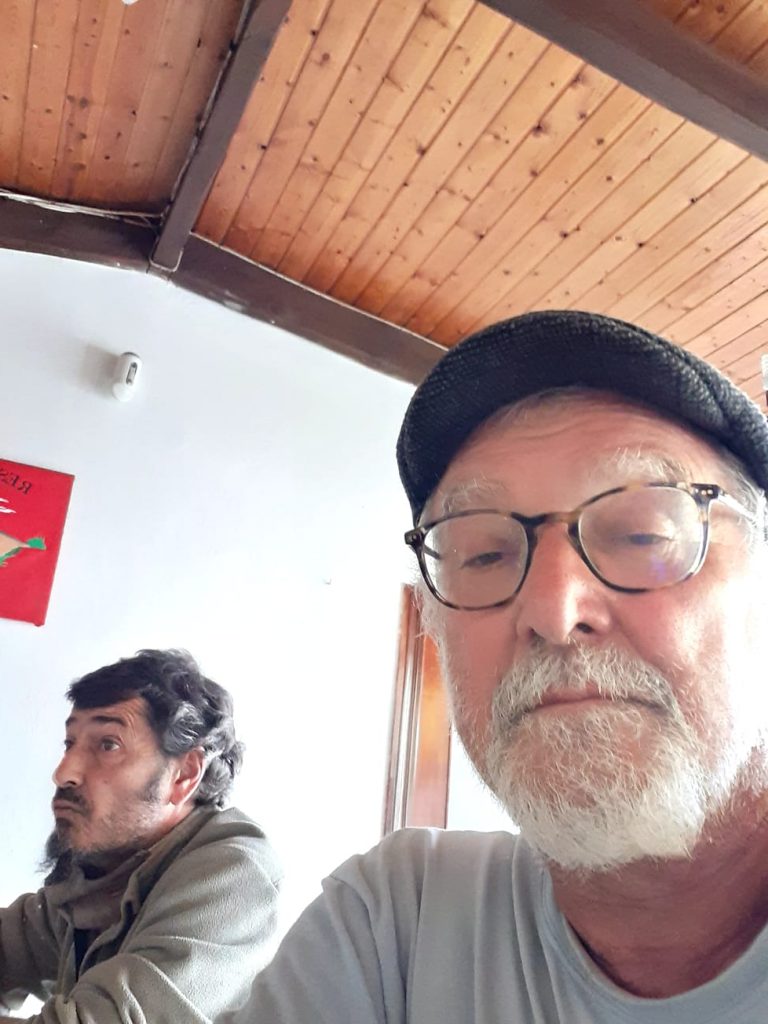
The saints George and Paul having a drink after work
As for my reforma, if he disagrees with what I want to do, he says so. The guy has style. He has come up with some much better ideas and solutions to problems than I have.
I’m the boss, as I pay the bills, but he’s the jefe really.
Jorge does not drive, so I have to collect him and take him home. He doesn’t like my driving.
“He sobrevivido cinco guerras; no quiero morir en un accidente de tráfico. Más despacio, coño, porfa.”
“I’ve fought in five wars (the Gulf – twice, Afghanistan, the Balkans and Iraq) and I’ve survived. I don’t want to die in a banal road accident. Will you please slow down.”
Fair enough. That’s San Jorge.
He no longer works for me as he has found permanent employment with a building company, and my obra is done, so I don’t need him. We occasionally bump into each other at my local and we have a good chinwag, avoiding politics, of course!
Note: The real St George, patron saint of England, and Spain’s dragon slayer, also have stories behind their legends. I just thought my St George is a more interesting character and, if you want to find out about him, you can’t look him up on Wikipedia.
© The Crazy Guy
Acknowledgements:
Karl Smallman
Paul Whitelock
Secret Serrania
Wikipedia
Tags:
Afghanistan, albañil, April 23, Aragón, Balkans, Berti, Bosnia and Herzegovina, carpentry, Catalonia, chef, Crazy Guy, cuba, electrical work, El Ferrol, England, Ethiopia, Foreign Legion, Francisco Franco, Franco, Galicia, gallego, George, Georgia, guiri, Gulf, Hammerite, Iraq, jardinera, Jorge, José, Karl Smallman, labourer, legionario, liberal democrat, Libya, Malta, Montejaque, Moscow, Paul Whitelock, peón, Ronda, St George, St George’s Day, San Jorge, Secret Serrania, Silene, socialist, Spain, Spanish Civil War, Spanish Foreign Legion
 1
Like
Published at 7:07 AM Comments (0)
1
Like
Published at 7:07 AM Comments (0)
My temporary office
Sunday, April 7, 2024
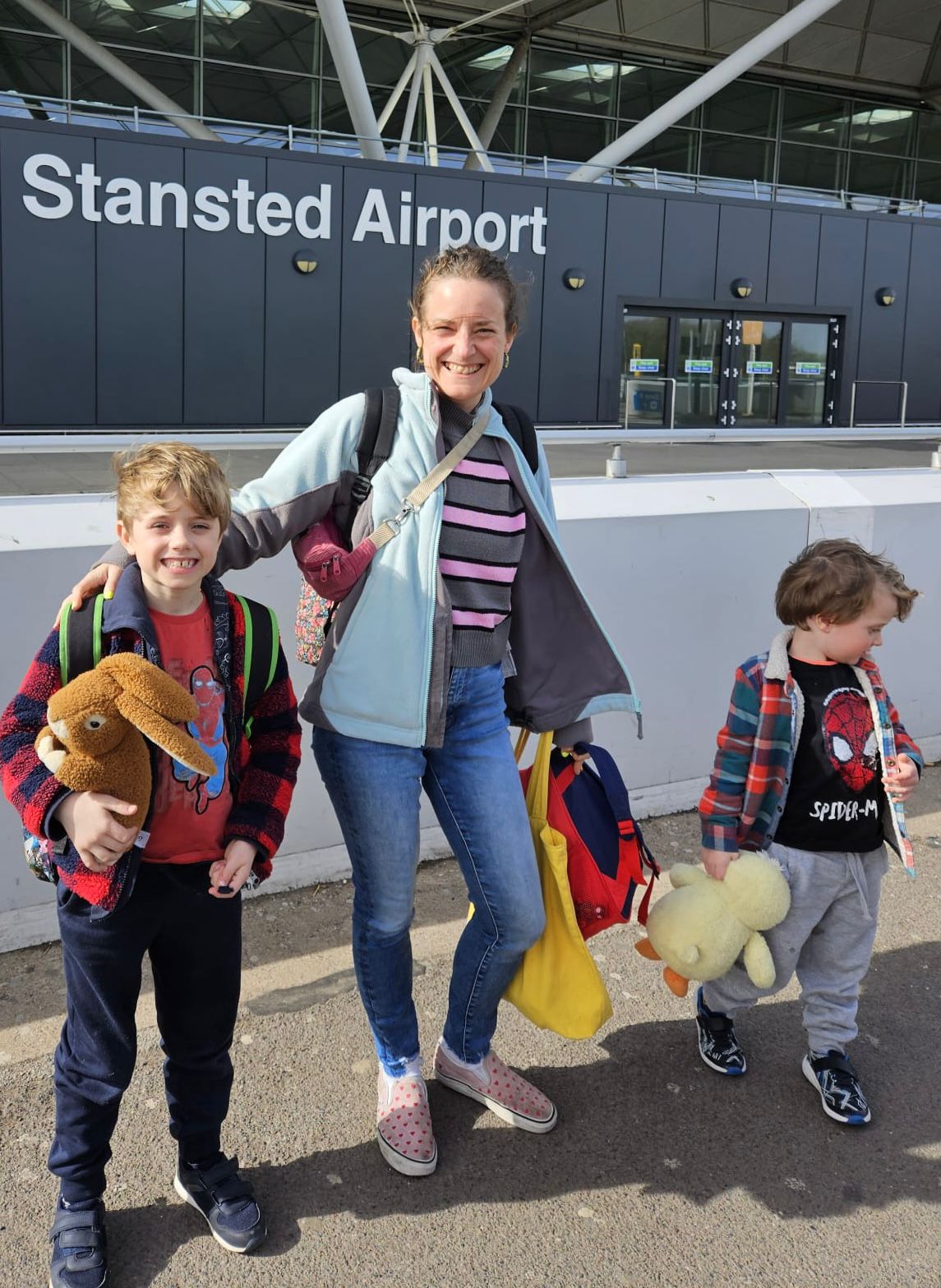 My daughter and two grandsons arrived from England late last night to spend a week with us here in Ronda. My daughter and two grandsons arrived from England late last night to spend a week with us here in Ronda.
Amy, Felix and Jude flew from Stansted to Malaga, where I picked them up.
We had spent the last few days getting our house, garden and pool tidied up ready for their arrival.
Photo : Jeryl Whitelock-Burgess
Busy, busy
 I cleaned the pool and tried it out a few times (Brrr! Just 15C!). I tidied up the garden and the playground which two friends and I created a couple of years ago for our eight grandchildren to use when they visit. I also created a new “secret garden” (a private seating area with loungers and a sun umbrella) at the back of our large plot with fruit bushes, plants, and a barbecue. I cleaned the pool and tried it out a few times (Brrr! Just 15C!). I tidied up the garden and the playground which two friends and I created a couple of years ago for our eight grandchildren to use when they visit. I also created a new “secret garden” (a private seating area with loungers and a sun umbrella) at the back of our large plot with fruit bushes, plants, and a barbecue.
And I planted more fruit trees in the adjacent huerto to complete my orchard.
Photo: iStock
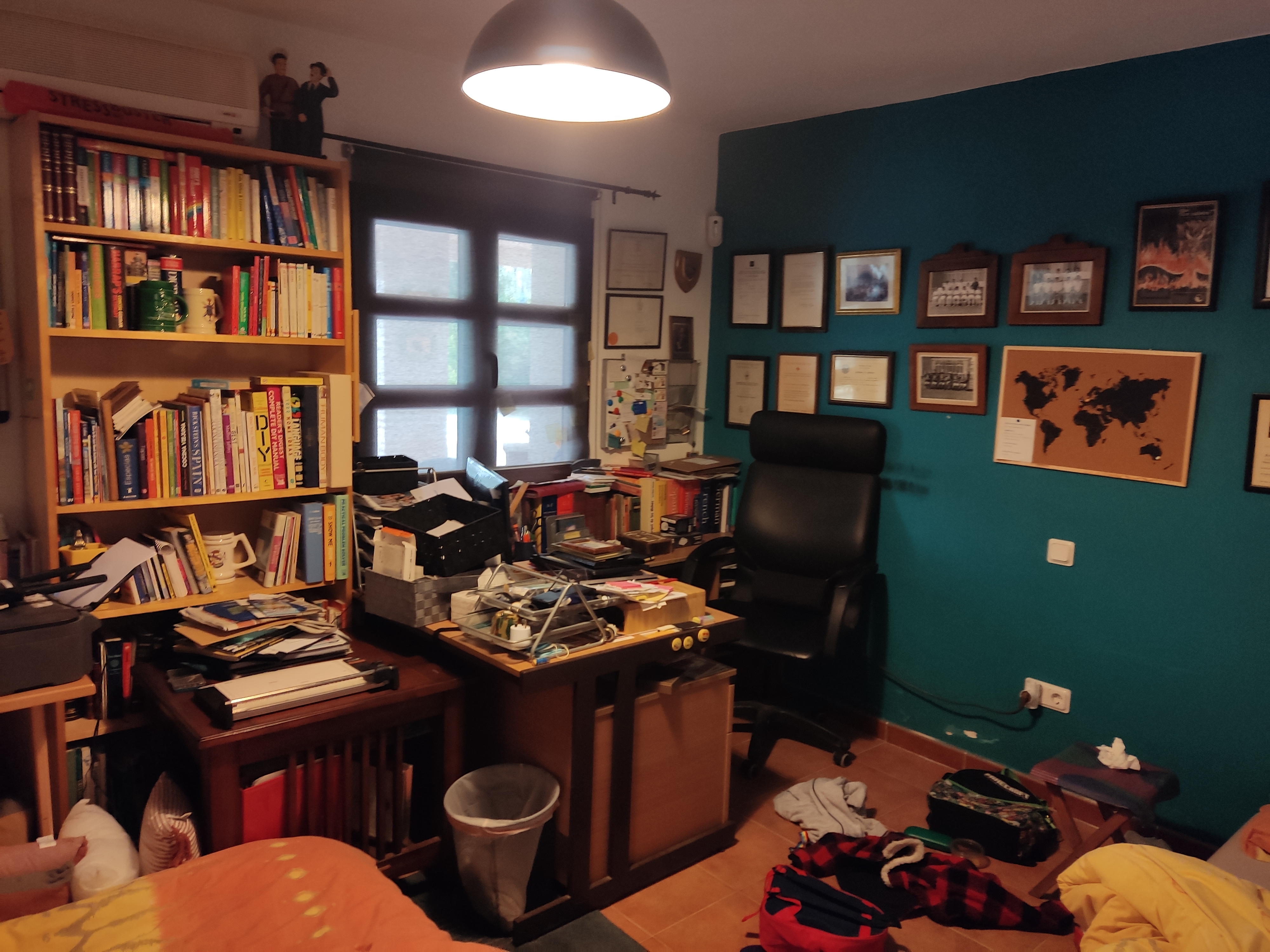 In the house I had to vacate the “office”, or study, which doubles as our third bedroom when we have visitors. Out came the two single beds for Felix and Jude, while Amy had the main guest bedroom to herself. In the house I had to vacate the “office”, or study, which doubles as our third bedroom when we have visitors. Out came the two single beds for Felix and Jude, while Amy had the main guest bedroom to herself.
So, I moved my computer to our “entrance lobby” off the dining room. It’s not used as an entrance as we blocked up the front door and use the back door as our main entrance.
My temporary office
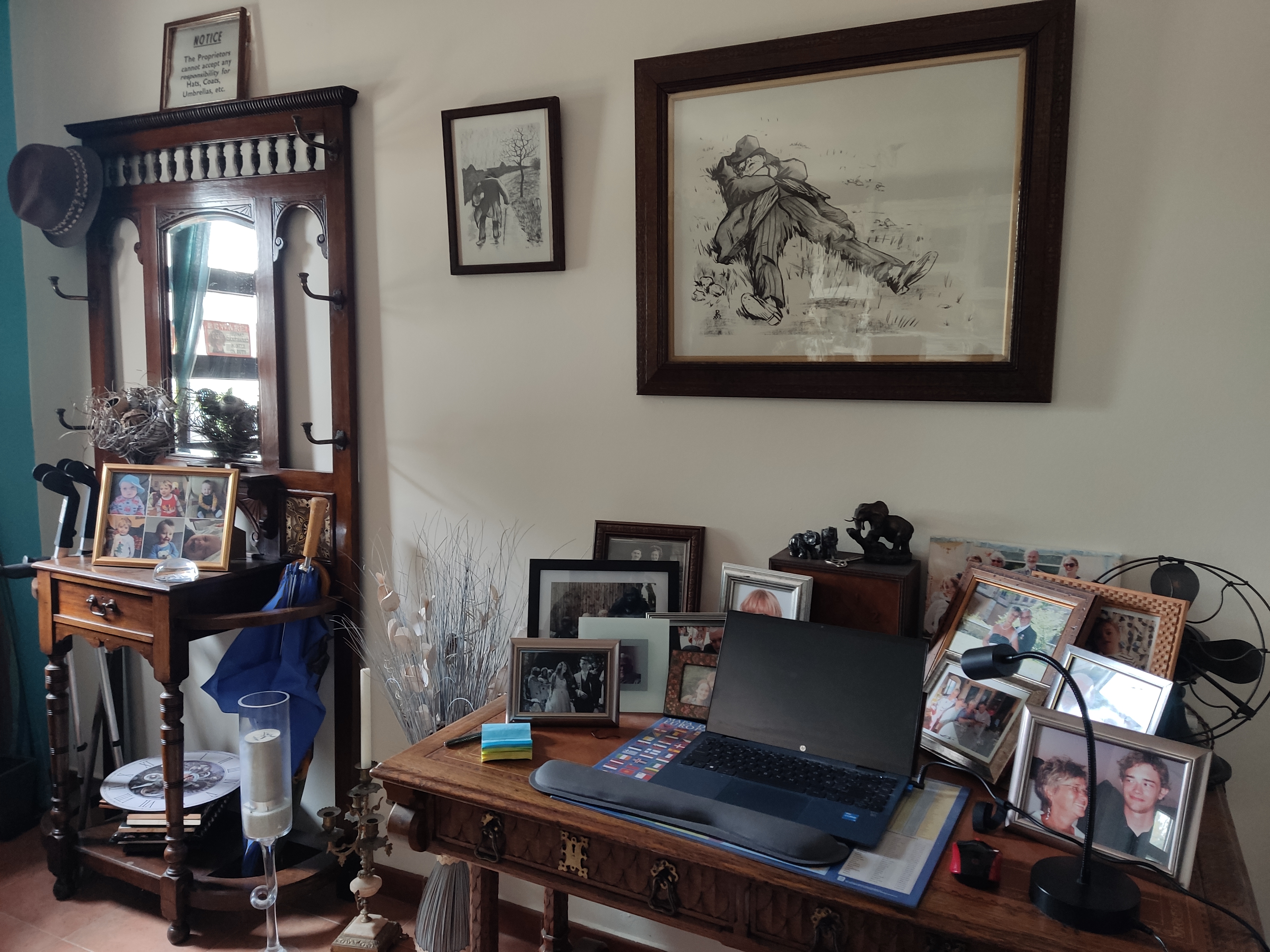 This “vestibule” is rather pleasant, if we say so ourselves. The furniture is antique. The restored desk is by Gillow and worth a lot of money. Crafted in the early 20th century before Mr Gillow got together with Mr Waring to establish an upmarket furniture chain in the UK, Waring and Gillow, sadly no longer. This “vestibule” is rather pleasant, if we say so ourselves. The furniture is antique. The restored desk is by Gillow and worth a lot of money. Crafted in the early 20th century before Mr Gillow got together with Mr Waring to establish an upmarket furniture chain in the UK, Waring and Gillow, sadly no longer.
That is where I am sitting writing this piece.
Pride of place on this piece of oak furniture with leather inlay is a pre-World-War-Two wooden clock on top of which sit three elephants from my extensive collection of said creatures. To the right is an antique desk-top fan, which works if needed, eg in the summer. The rest of the desk is covered with family photos which have been shoved to the back to make space for me to work.
Family photos
This is a true family archive spanning four generations. There are wedding photos of my mum and dad, Jack and Vera Whitelock (1948), of Rita and me (2010) and of Tom, my son, and Su (2018). Also, a wedding photograph featuring our extended family.
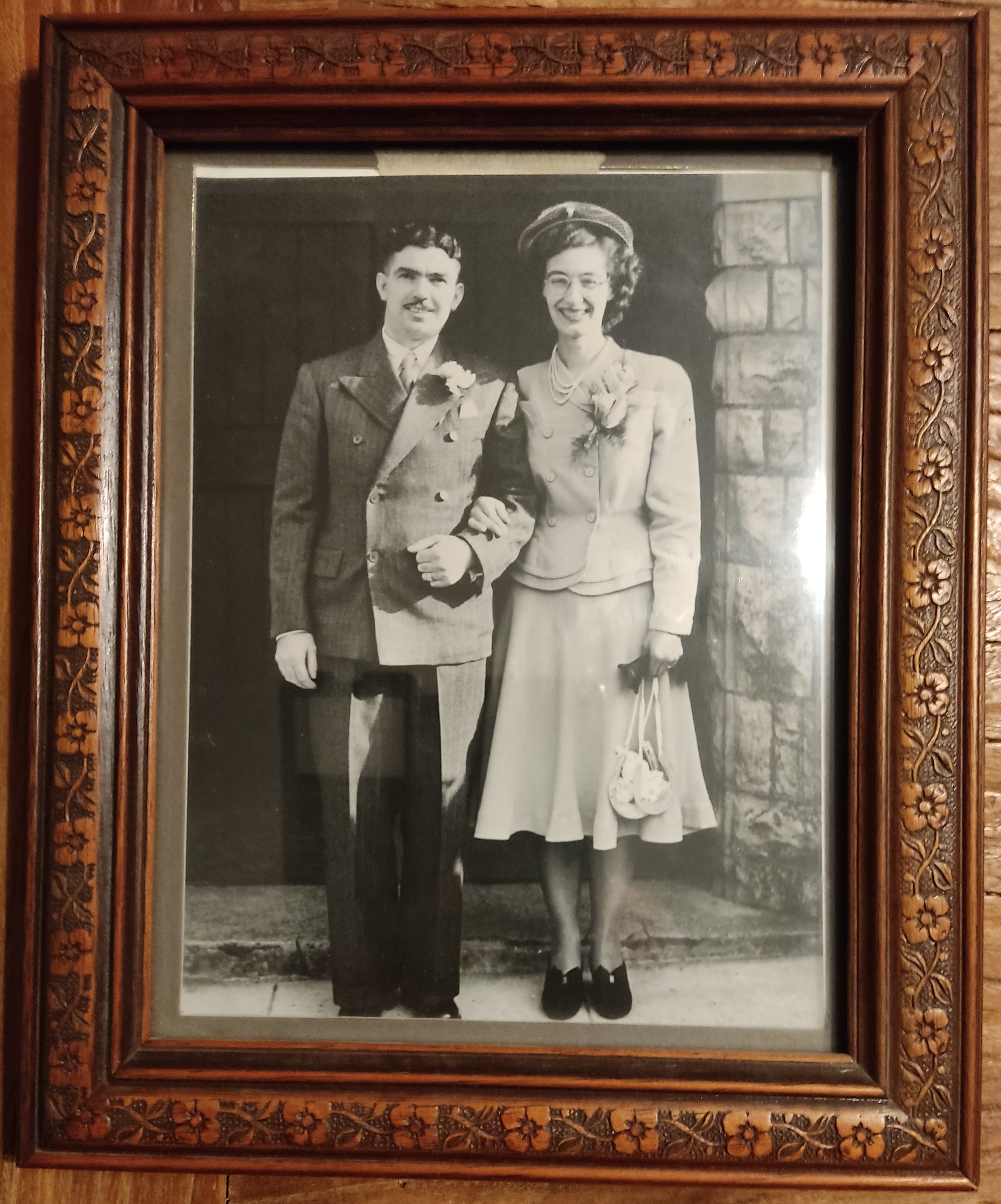 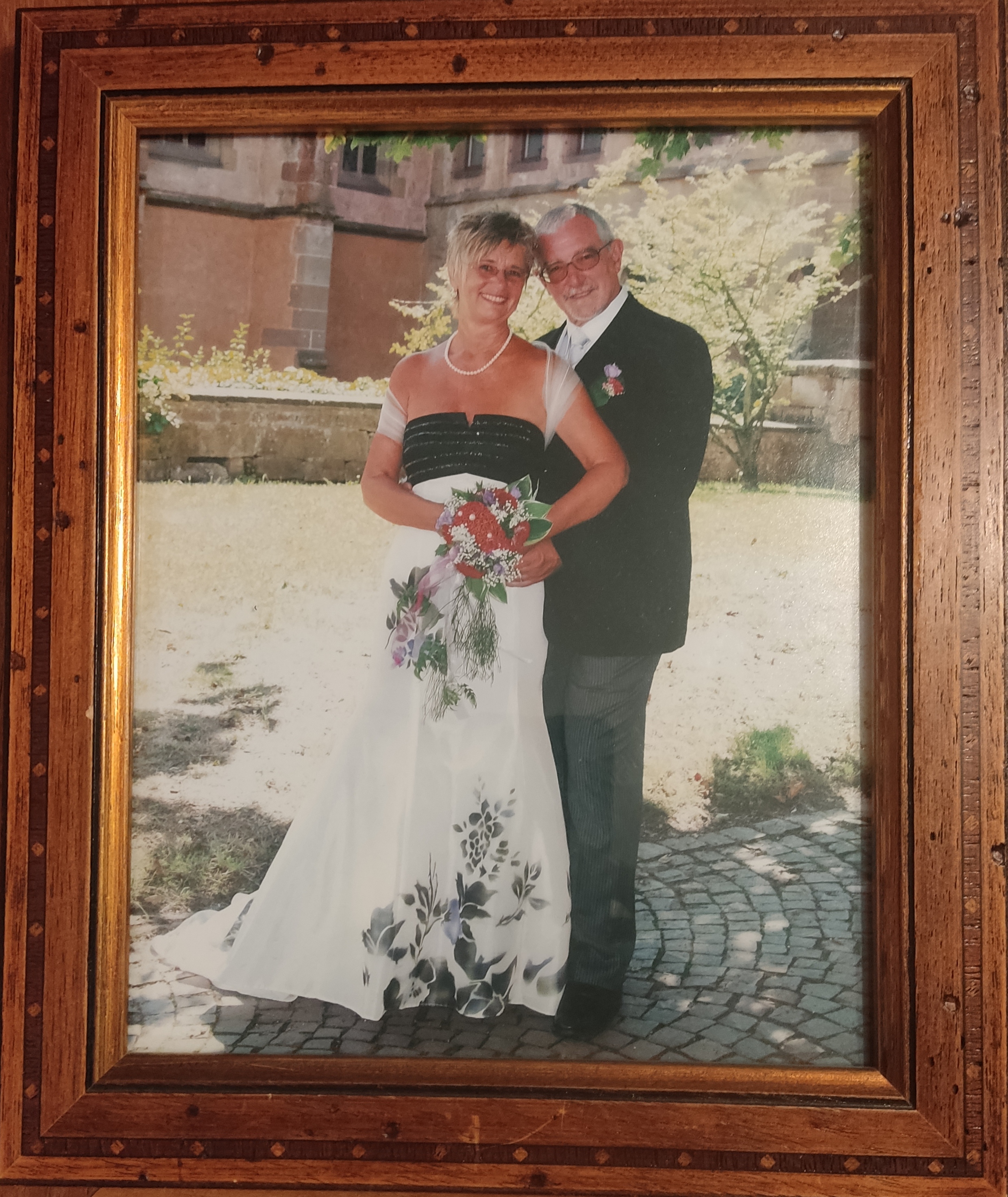 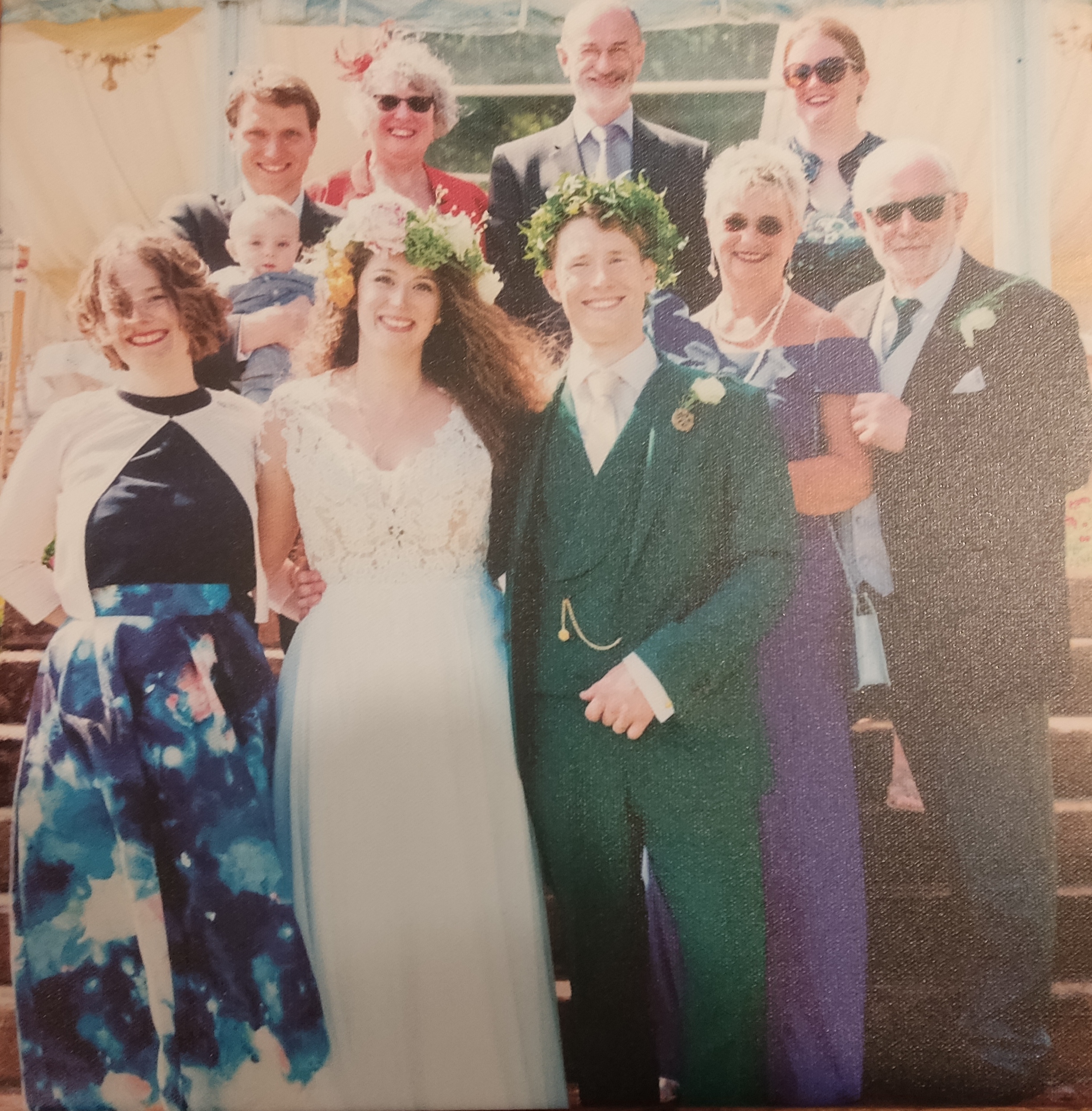
Jack and Vera Whitelock (1948, UK) Rita and Paul Whitelock (2010, Germany) Su and Tom Austin-Whitelock (2018, UK)
There are old photos of the Drechslers, Rita’s family, with her mum Elisabeth, and four siblings (Rita is a cheeky-looking five-year-old), Birgid, Karin, Horst, and Irmhild. Missing from the photo is Friedrich, dad, who died when the children were small. Karin later died young, aged 26, following a botched routine hospital operation.
Also, a photo of Rita’s two surviving sisters, Birgid and Irmhild, and their husbands, Uwe and Egon.
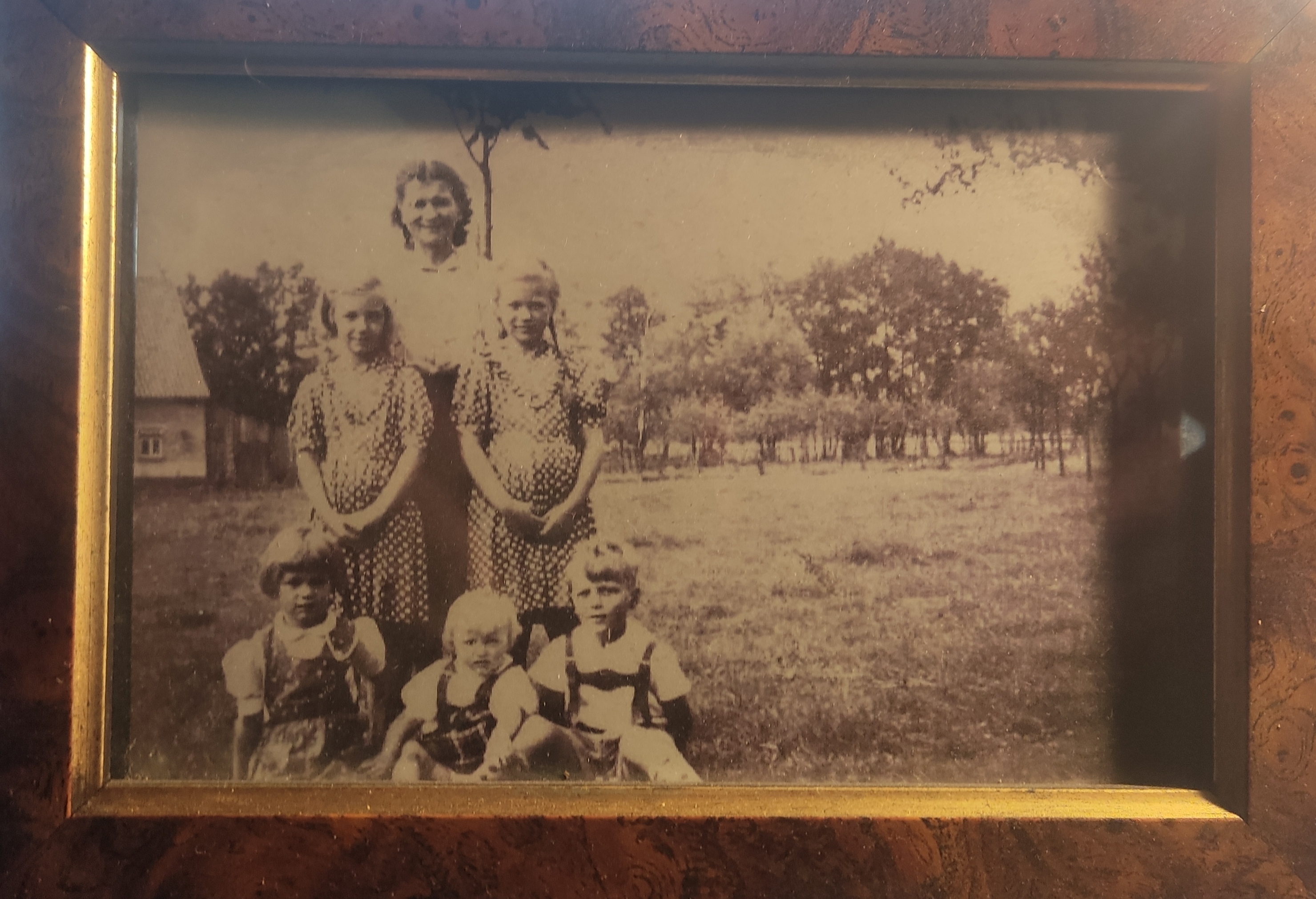 
The Drechslers from Oesterholz (NRW) The Brinkmanns and the Goehmanns
On the desk is also a nice photo of Rita with younger son, Jojo (Jonathan).
.jpg) As for my side of the family, apart from the ones already mentioned, there’s a nice photo of me and my mum, Vera (then aged 92), taken outside Maulbronn Abbey where we got married. Yes, despite her age and being in a wheelchair, Vera made it to our wedding in Germany. As for my side of the family, apart from the ones already mentioned, there’s a nice photo of me and my mum, Vera (then aged 92), taken outside Maulbronn Abbey where we got married. Yes, despite her age and being in a wheelchair, Vera made it to our wedding in Germany.
There’s a photo of me and Rita taken at Restaurante Molino del Santo in Estacion de Benaojan, where we were celebrating a wedding anniversary; of Felix and Jude with a gorilla at Fuengirola Zoo; Felix’ first school photo and another photo of Felix and Jude; Amy and Tom as teenagers in our garden in Thelwall, Cheshire, and that’s it.
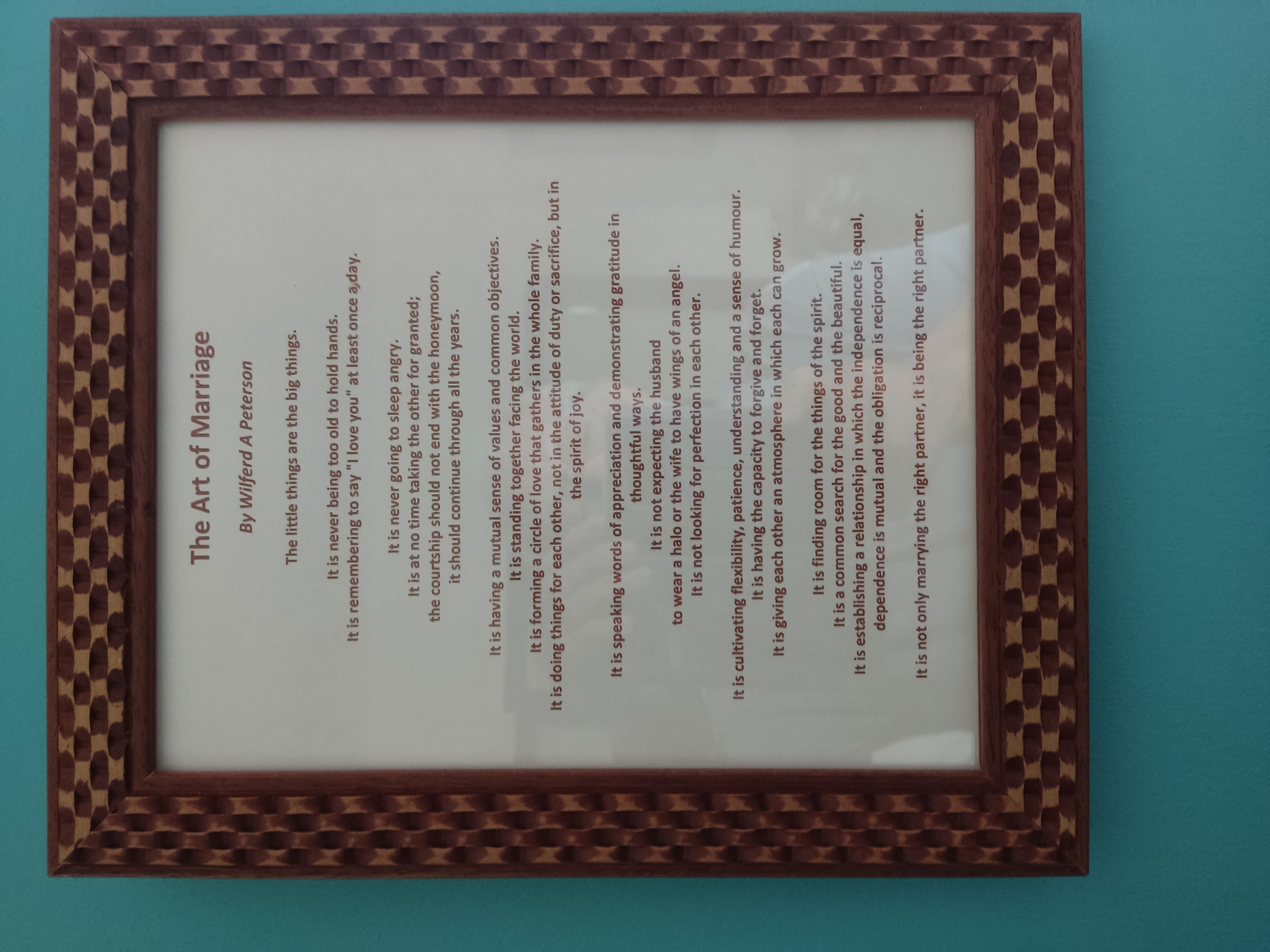
The rest of this lobby area features a restored wooden hallstand, a metre-high oak cakestand, an oak dining chair and a large painting on an easel, which I bought from Venta El Puente, La Indiana, where it was on display.
On the walls there are two pictures of tramps in old oak frames and a framed poem, called ‘The Art of Marriage’ by Wilferd A Peterson, which was read at our wedding by my best man, brother Simon.
As I sit here writing this, all is peaceful. It’s Saturday 7.30 am and the others are still asleep. I shall conclude this now and go and make a second cup of tea. I’m English and old habits die hard!
Have a good day!
PS. It’s my brother Simon’s 71st birthday today. Congratulations, bruv!
© Pablo de Ronda
Photos:
Paul Whitelock, unless labelled otherwise .
Tags:
Amy, Art of Marriage, barbecue, Birgid, Cheshire, Drechsler, Egon, Elisabeth, Estación de Benaoján, entrance lobby, Felix, fruit bushes, fruit trees, Fuengirola Zoo, garden, Gillow, Horst, huerto, Irmhild, Jack, Jojo, Jonathan, Jude, Karin, La Indiana, Maulbronn Abbey, Molino del Santo, oak furniture, office, orchard, Pablo de Ronda, plants, playground, pre-World War Two wooden clock, Rita, Ronda, secret garden, Simon, study, Su, temporary office, Thelwall, Tom, Uwe, Venta El Puente, Vera, vestibule, Waring, Waring and Gillow, Whitelock, Wilferd A Peterson
 1
Like
Published at 8:24 AM Comments (0)
1
Like
Published at 8:24 AM Comments (0)
“The Good Life” (Andalusian style)
Thursday, April 4, 2024
 Do you remember the classic BBC Television comedy series starring Richard Briers as Tom, Felicity Kendall as Barbara, with “posh” neighbours Paul Eddington as Jerry and Penelope Keith as Margo? Do you remember the classic BBC Television comedy series starring Richard Briers as Tom, Felicity Kendall as Barbara, with “posh” neighbours Paul Eddington as Jerry and Penelope Keith as Margo?
Photo: BBC
It was about a couple, Tom and Barbara Good, trying to be self-sufficient by growing their own fruit and veg and having chickens for eggs. Their neighbours, Margo and Jerry Leadbetter, were of a different opinion.
“The Good Life” (Andalusian style)
Well, I reckon my German wife, Rita, and I are close to living our own version of the good life.
We live in the country and have a large garden and an additional field of one hectare (10,000 m2).
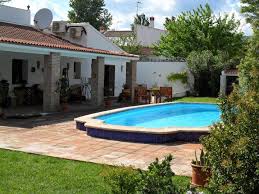 The garden is well laid out, thanks to our predecessors, the Bradleys. There are bushes of various kinds which give us colour all year round. There are roses of all hues, oleanders, bougainvilleas, Pfeifenputzer (bottle brushes), climbers, honeysuckle, cherry trees, heather, daisies, aloe vera, cactus and much, much more. The garden is well laid out, thanks to our predecessors, the Bradleys. There are bushes of various kinds which give us colour all year round. There are roses of all hues, oleanders, bougainvilleas, Pfeifenputzer (bottle brushes), climbers, honeysuckle, cherry trees, heather, daisies, aloe vera, cactus and much, much more.
In the nearest part of our large field, I have allowed our gardener, Rafael, to use a 150 m2 area as a huerto. There he grows a variety of vegetables on a grand scale.
Villa Indiana [Photo courtesy of A1 Inmobiliaria]
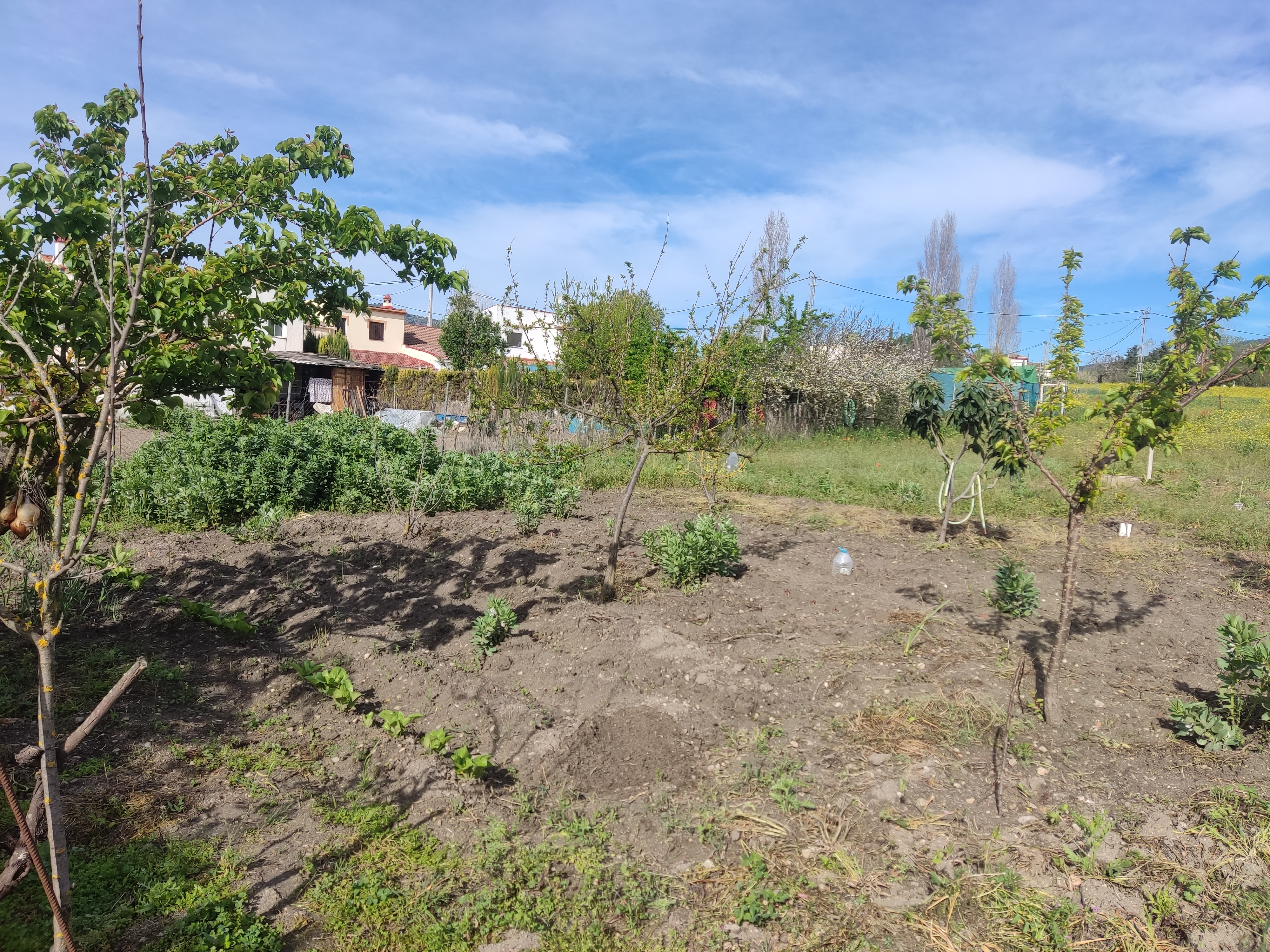 We also have a small orchard here with some 20 fruit trees and bushes ranging from almond, apple, apricot, blackberry, blackcurrant, cherry, gooseberry, lemon, mandarin orange, mirabelle, pear, plum, quince, raspberry (red and yellow varieties), redcurrant. We also have a small orchard here with some 20 fruit trees and bushes ranging from almond, apple, apricot, blackberry, blackcurrant, cherry, gooseberry, lemon, mandarin orange, mirabelle, pear, plum, quince, raspberry (red and yellow varieties), redcurrant.
Near the house I have reclaimed several areas of lawn which had little or no grass, added topsoil, free from a local restaurant, enriched the earth, and planted vegetables with varying degrees of success.
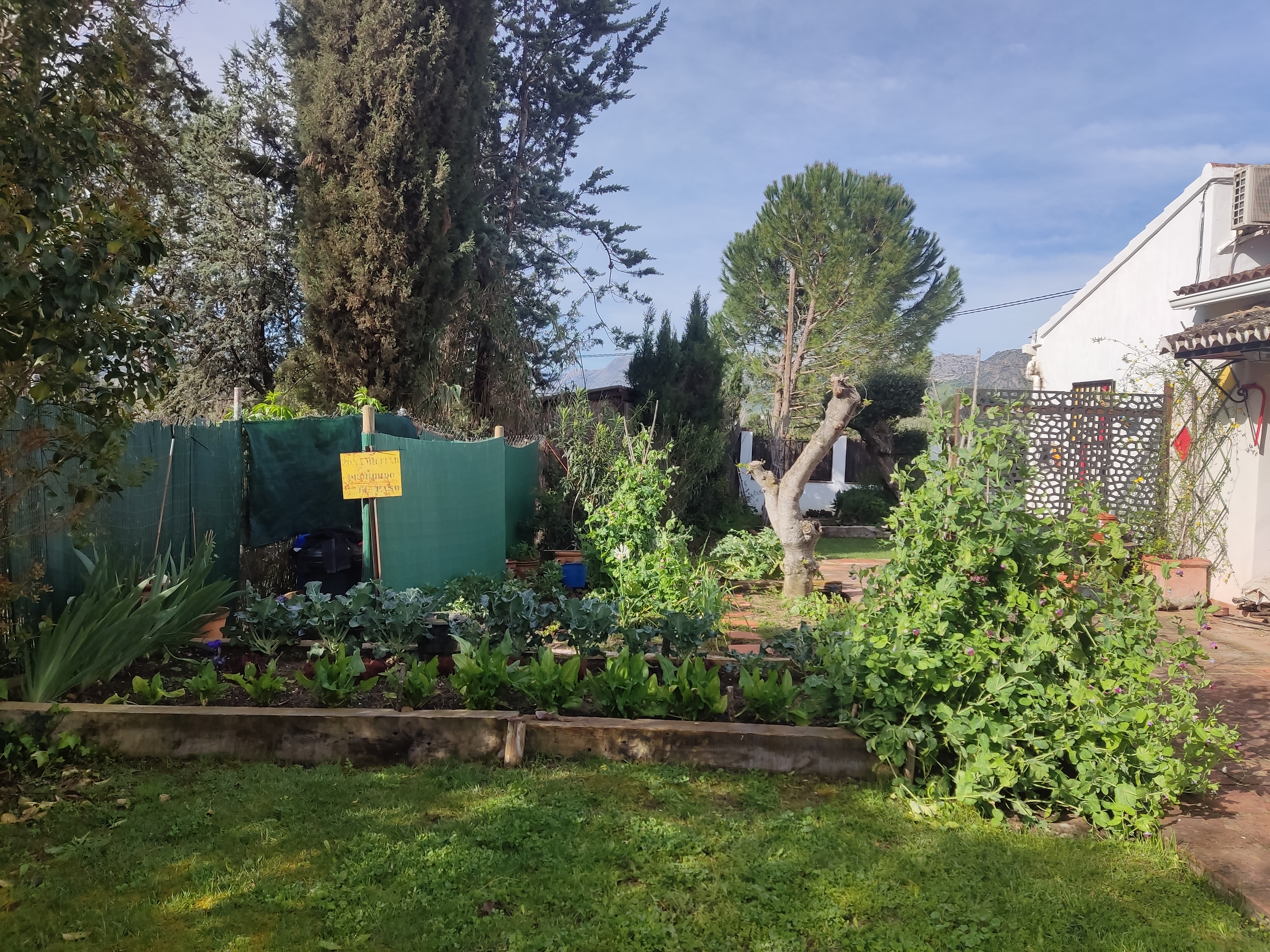 Tomatoes and runner beans have failed consistently, but this year I have a bumper crop of mangetout peas, several kinds of lettuce, onions and broccoli. The broad beans are looking promising and I’m still waiting for artichokes and brussels sprouts. Tomatoes and runner beans have failed consistently, but this year I have a bumper crop of mangetout peas, several kinds of lettuce, onions and broccoli. The broad beans are looking promising and I’m still waiting for artichokes and brussels sprouts.
It's only early April; too soon to plant potatoes, cucumbers and some other crops.
In addition, Rafael, a green-fingered Spanish guy if I ever I saw one, provides us with a supply of tomatoes, courgettes (green and yellow), cucumbers, squashes of various kinds, whatever he grows, throughout the summer.
Neighbours also occasionally give us produce.
No chickens
 Unlike Tom and Barbara Good we don’t keep chickens. Yet we get a regular supply of farm-fresh eggs from our next-door-but-one-neighbour Mercedes. Free-of-charge. We reckon it’s a kind of “rent” for the use of a corner of our field by her house, which she has turned into a huerto of her own. Unlike Tom and Barbara Good we don’t keep chickens. Yet we get a regular supply of farm-fresh eggs from our next-door-but-one-neighbour Mercedes. Free-of-charge. We reckon it’s a kind of “rent” for the use of a corner of our field by her house, which she has turned into a huerto of her own.
If her chickens aren’t laying we can buy eggs from another neighbour further up the lane, Pepi. Two euros for a dozen! Amazing! Her husband, Juan, already in his 80s, is also an industrial scale gardener and sporadically gives us produce such as cabbages and lettuce.
Photo: Britannica
Our good life
And just like the TV comedy, The Good Life, our situation is also a bundle of laughs.
Both long retired, we have the time, if not always the energy, to live this kind of good life. It's fairly inexpensive; we just need to pay for the odd packet of seeds or some seedlings, the occasional fruit tree and sacks of compost to augment my own two compost heaps (one aerobic and one anaerobic).
Most of our produce is free, or based on a kind of barter system.
Latest project
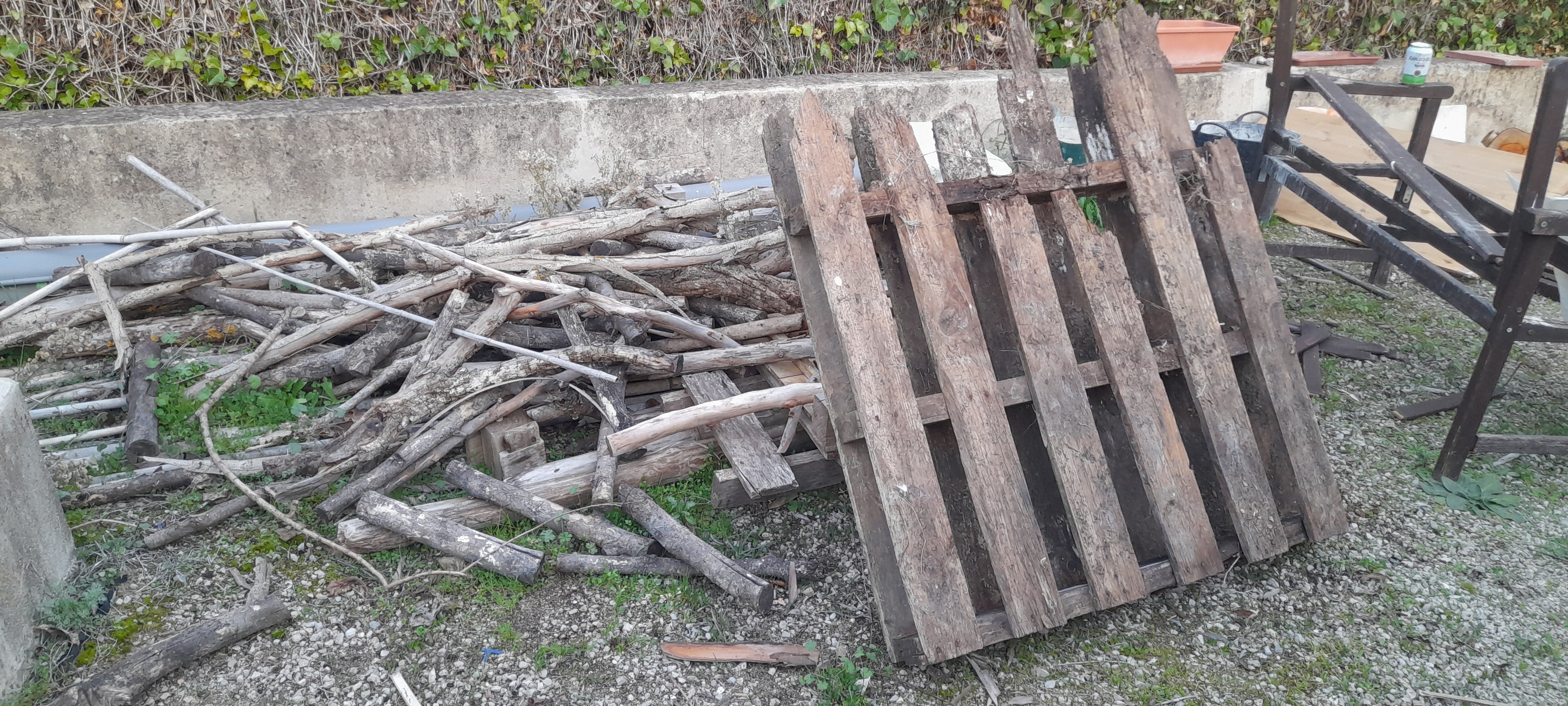 An area in the back left corner of our garden has been a dumping ground for plant pots, reclaimed wood, eg pallets, rubble and goodness knows what. I am currently turning it into a "Secret Garden", a tidy sitting area with plants, shrubs and an almond tree. There are sunloungers, a sun umbrella and a table and chairs. Oh, and a barbecue. An area in the back left corner of our garden has been a dumping ground for plant pots, reclaimed wood, eg pallets, rubble and goodness knows what. I am currently turning it into a "Secret Garden", a tidy sitting area with plants, shrubs and an almond tree. There are sunloungers, a sun umbrella and a table and chairs. Oh, and a barbecue.
Located behind our pumphouse (for the well), and shaded from the next-door property by a hedge, it is very private.
There is also electricity available, for power tools and for lighting, should we wish to sit there in the late evening.
Conclusion
"The Good Life" English-style or our good life in Andalusia, well, it's all much the same, I reckon.
***
All photos by Paul Whitelock, unless otherwise indicated.
Interesting links:
Working for free? Why? Er… why not? - Secret Serrania de Ronda
Working for free? Why? Er… why not? Part 2. (eyeonspain.com)
© Pablo de Ronda
Acknowledgements:
A1 Inmobiliaria
Britannica
BBC
Eye on Spain
Karl Smallman
Paul Whitelock
Secret Serrania
Tags:
almond, almond tree, aloe vera, apple, apricot, BBC, Barbara Good, barbecue, barter system, blackberry, blackcurrant, bottle brushes, bougainvilleas, cabbages, cactus, cherry, climbers, compost, cherry trees, chickens, electricity, daisies, Eye on Spain, farm-fresh eggs, Felicity Kendall, fruit tree, Good, gooseberry, green-fingered, heather, hectare, honeysuckle, huerto, industrial scale gardener, Jerry Leadbetter, Juan, Karl Smallman, lemon, lettuce, lighting, mandarin orange, Margo Leadbetter, Mercedes, mirabelle, oleanders, orchard, Pablo de Ronda, pallets, Paul Eddington, pear, Penelope Keith, Pepi, Pfeifenputzer, plant pots, plants, plum, power tools, pumphouse, quince, Rafael, raspberry, redcurrant, Richard Briers, reclaimed wood, roses, rubble, "Secret Garden", Secret Serrania, seedlings, seeds, shrubs, sitting area, sunloungers, sun umbrella, The Good Life, Tom Good
 1
Like
Published at 11:48 AM Comments (0)
1
Like
Published at 11:48 AM Comments (0)
Wirtschaftswunder? ¿Qué pasa en Alemania?
Thursday, March 28, 2024
Germany, once the economic powerhouse of the European Union, since its days as the European Coal and Steel Community (1951), the European Common Market (1957), the European Economic Community (1967), and the European Community (2002). It finally became the European Union in 1993.
 The original six countries, Belgium, France, (West) Germany, Italy, Luxembourg and the Netherlands, expanded to 28 at its peak in 2016, now 27 following Brexit, when the UK opted to leave the Union. Following a referendum on 23 June 2016, Brexit officially took place at 23:00 GMT on 31 January 2020. The original six countries, Belgium, France, (West) Germany, Italy, Luxembourg and the Netherlands, expanded to 28 at its peak in 2016, now 27 following Brexit, when the UK opted to leave the Union. Following a referendum on 23 June 2016, Brexit officially took place at 23:00 GMT on 31 January 2020.
So, what is happening in Germany?
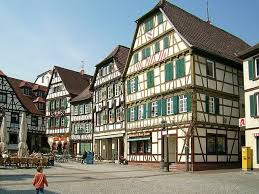 Let’s take a look through the example of a small town in Baden-Wuerttemberg, south Germany. Let’s take a look through the example of a small town in Baden-Wuerttemberg, south Germany.
Retired Philosophy professor, Diego Núñez, wrote an article last October in Diario Sur, based around the town of Bretten (pop. 20,000) 45 kilometres to the north of Stuttgart.
I know Bretten quite well. As a 20-year-old student I worked one summer at the nearby motorway services at Bruchsal. Decades later, having acquired a German wife, I have been a frequent visitor to Bretten, as it’s the main town in the area where my German stepson Johannes lives and works.
El drama alemán
I was surprised at the content of Professor Nuñez’ article.
He reports that he went out one day at the end of September 2023 with his wife to go shopping. I assume that they now live there.
First stop was the Dry Cleaner’s. To their surprise there was a big sign on the locked door stating that the place had shut down.
A passer-by, noticing their surprise, commented that all the Dry Cleaners in the area had closed down. The nearest one now was in Karlsruhe, 30 kilometres away.
Next stop the Bakery. Of the four that co-existed in the town, only two remain open, they were told by the baker, an acquaintance. “I’ve kept going by maintaining my prices but by reducing the size of my loaves and rolls.” he told them.
Technical Recession
And so it continued. As industry in the area has declined so has the number of small businesses. The reason, they all say, is the high cost of energy.
 The federal government tries to mask the situation, but the fact is the German economy has stagnated and there is no obvious way out in the short term. However hard it tries to deny it, Germany has been in a technical recession for months. The federal government tries to mask the situation, but the fact is the German economy has stagnated and there is no obvious way out in the short term. However hard it tries to deny it, Germany has been in a technical recession for months.
There is a pronounced sense of economic pessimism. According to the Federal Office of Statistics in Wiesbaden (Hesse), food prices have soared compared with the year before. For example, bread has gone up by 10.7%; fruit by 8.2%; and vegetables by 7.9%. In the case of fuel, petrol went up by 1.4% and diesel by 3.5% in just one month, from August to September 2023.
 Faced with this scenario, the typical reaction of German citizens is to save. Faced with this scenario, the typical reaction of German citizens is to save.
Progress on digitalisation and improvements to infrastructure have both been slow.
The federal government is doing what it can, but discontent among the population is palpable, with many citizens turning to the right-wing party Alternative fur Deutschland (AfD).
Germany, under Chancellor Olaf Scholz (SPD) has lost its place in the world hierarchy, but that’s another story for another day …..
© Pablo de Ronda
Acknowledgements:
Diario Sur
Diego Núñez
El Mundo
Federal Office of Statistics, Wiesbaden
Paul Whitelock (translator)
Wikipedia
Tags:
Alemania, AfD, Alternative fur Deutschland, Baden-Wuerttemberg, bakery, Belgium, bread, Bretten, Brexit, Bruchsal, Chancellor Olaf Scholz, Common Market, Diario Sur, Diego Núñez, diesel, digitalisation, Dry Cleaner, economic pessimism, economic powerhouse, European Coal and Steel Community, European Community, European Economic Community, European Union, Federal Office of Statistics, federal government, France, fruit, fuel, German citizens, German economy, Germany, Hesse, high cost of energy, improvements to infrastructure, industry, Italy, Karlsruhe, Luxembourg, motorway services, Netherlands, Olaf Scholz, Pablo de Ronda, petrol, Philosophy professor, small businesses, SPD, Stuttgart, technical recession, UK, vegetables, Wiesbaden
 0
Like
Published at 12:08 PM Comments (0)
0
Like
Published at 12:08 PM Comments (0)
“Hotel” Indiana
Saturday, March 23, 2024
By Pablo de Ronda
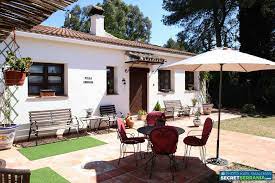 Our domicilio, our home, just outside Ronda has lots of great features and advantages over our previous abode. That's why we bought it some 13 years ago, six months after we got married. We moved in on 5 February 2011. Our domicilio, our home, just outside Ronda has lots of great features and advantages over our previous abode. That's why we bought it some 13 years ago, six months after we got married. We moved in on 5 February 2011.
Since then, we have had regular “guests”, from our UK and German families and from friends old and new. We even took paying guests for two summers in the aftermath of the Covid.19 pandemic, in order to replenish depleted coffers.
The Early Years
Since our move in 2011 we have had a regular stream of visitors, except for the lockdown years. Close family come regularly; extended family less frequently; friends old and new as and when.
Rita’s three siblings have played a significant role.
Brother Horst was staying with us in Montejaque with childhood friend Klaus (d. 2023), when we viewed Villa Indiana for the first time. He liked it and endorsed our decision to buy. He has visited a number of times since then and has always helped out with a few plumbing and central heating problems we’ve had over the years.
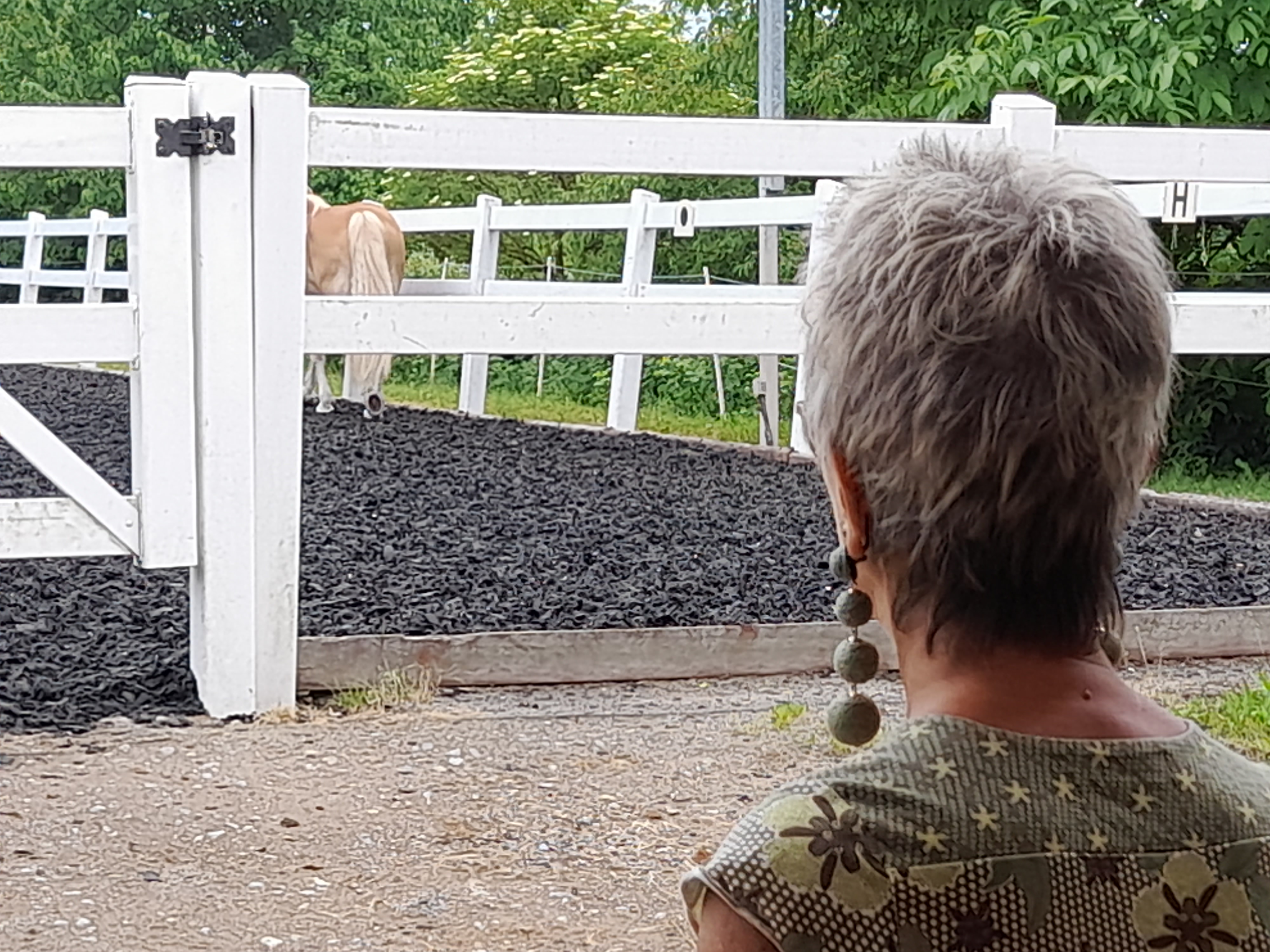 Rita’s two sisters, Birgid and Irmhild (Hilde), came shortly after we moved in to help us furnish and fit the house, and decide which furniture to use. We had three lots: Rita’s German stuff, my entire house contents from England, plus furniture from a house in Ronda, as part of my “commission” for selling it on behalf of its English owner, actually a former “girlfriend”, Maude. Rita’s two sisters, Birgid and Irmhild (Hilde), came shortly after we moved in to help us furnish and fit the house, and decide which furniture to use. We had three lots: Rita’s German stuff, my entire house contents from England, plus furniture from a house in Ronda, as part of my “commission” for selling it on behalf of its English owner, actually a former “girlfriend”, Maude.
Elder son Johannes stayed with us for several months in 2011 after we moved in. He is a Schreiner (joiner/cabinet-maker) by trade and helped me out with a lot of infrastructure work in the house, garage and garden.
In 2012 Rita’s niece Bianca came with then boyfriend Frank (since deceased, sadly). They painted the entire interior of the house, replacing the ubiquitous white walls with off-white and a feature wall in colour in each room.
Their fee? We paid for their return flights, fed and watered them, and took them on trips and for meals out.
A good deal for both parties!
Another niece, Ronja, and her husband, Markus, visited us early on. Markus did some plastering for me. He’s a teacher but knows how to plaster too.
Bianca continues to visit from time to time. Come to think of it, she is overdue and hasn’t been for a while.
My daughter Amy visited with her boyfriend Carlo, subsequently husband, and, since last year, ex-husband.
Son Tom and girlfriend Su were also early visitors.
“Hotel” Indiana
 Birgid and Hilde have both visited regularly since that first time when we moved in, accompanied by their husbands, Uwe and Egon. These two brothers-in-law have both been amazing in terms of helping out with various “jobs” while they were here, notably fixing our well pump and electricity issues in the house, which no local “professional” was capable of doing! Birgid and Hilde have both visited regularly since that first time when we moved in, accompanied by their husbands, Uwe and Egon. These two brothers-in-law have both been amazing in terms of helping out with various “jobs” while they were here, notably fixing our well pump and electricity issues in the house, which no local “professional” was capable of doing!
Uwe, a retired physiotherapist, also gives me foot massages, which helps my dodgy back.
Rita’s offspring are regulars to varying degrees.
Daughter Katrin, husband Gero and children Anton, Madita and Lotte used to come every two years up until Covid. They’ve been once since the lockdown, last year. Daughter Madita (16) has just finished the equivalent of English GCSEs and is going to visit us on her own in July (her “graduation” present, before she goes to a new school to do her Abitur (similar to A-Levels).
Johannes, I’ve already mentioned. He has been a few times. With girlfriend Tiina on that first visit in 2011, and then with long-term partner Juliane, her two children, Iona and Noah, and their daughter together, Lyra.
Jonathan (Jojo), Rita’s youngest has been a few times with different girls but his most significant visit was when he accompanied Dana, Rita’s physiotherapist niece (daughter of brother Horst), when she came to “treat” her aunt after I discharged her from hospital, after suffering from a devastating bout of Covid-19. Jojo took the pressure off me, as I was knackered from caring for Rita, sleeping badly, and I still had Covid myself.
Dana and Jojo whisked Rita off to Germany for further treatment and convalescence before returning home to me three months later. That was in 2021.
Johannes has also visited with his cousins Dana, Ronja, Torben, and Silke.
Friends Helen and Jürgen have stayed a couple of times and
Iris and Rainer own a house in Montejaque and visit the area frequently. Sometimes, they stay the odd night at “Hotel” Indiana.
My elderly mother Vera managed to visit us once before she died, even weeding and pruning in our garden. She also braved the pool!
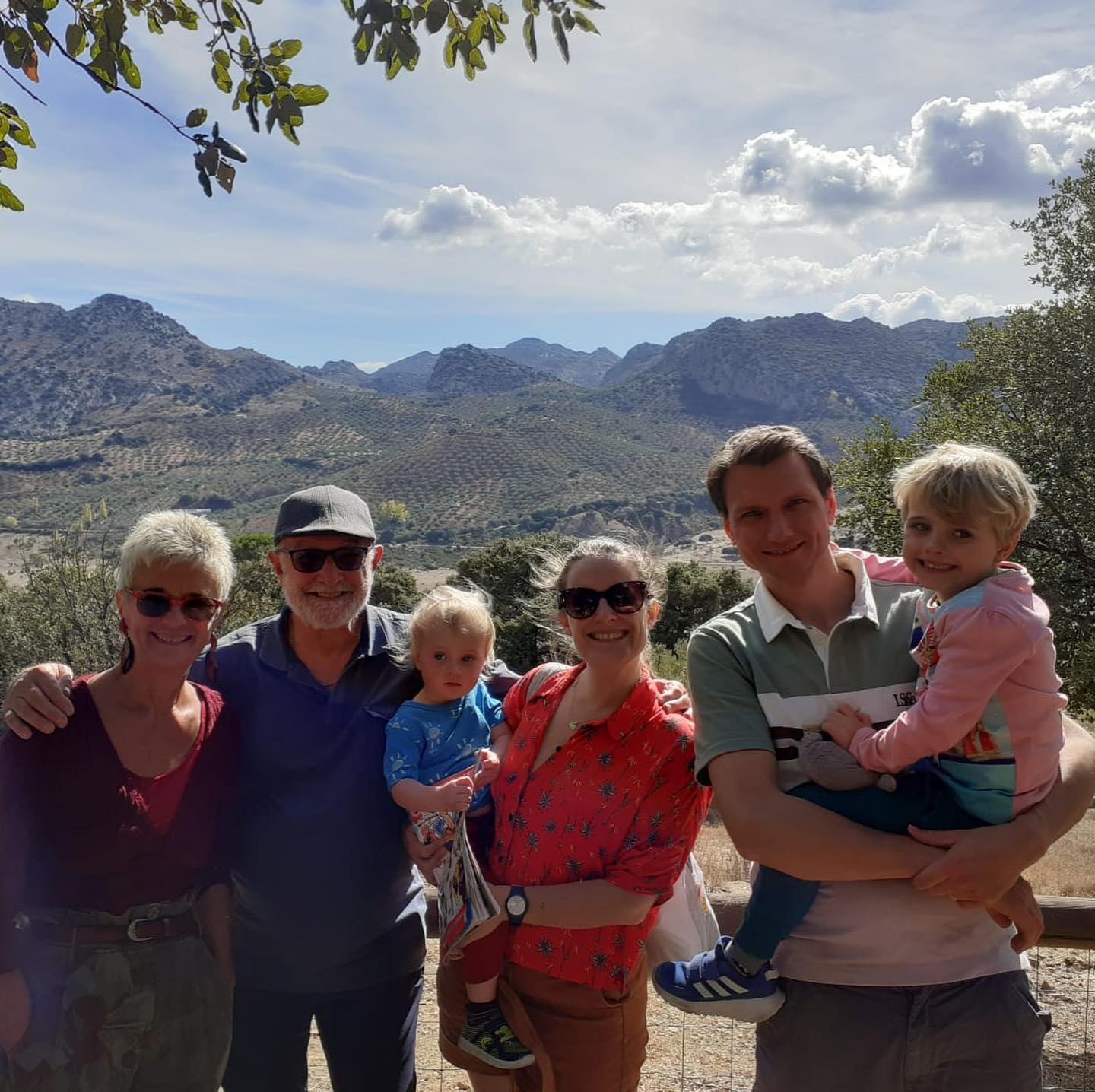 My kids, Amy and Tom, have also been regular visitors, both before and after children. Now they come with their respective young families, which now number four: Felix, Jude, Wilbur and baby Buckley. My kids, Amy and Tom, have also been regular visitors, both before and after children. Now they come with their respective young families, which now number four: Felix, Jude, Wilbur and baby Buckley.
My brother Simon and his wife Marilyn have been a few times, cousin Roger and wife Cheryl, also.
Old friends of mine have holidayed here too. Alan, a former teaching colleague from St Helens; Ian and Christine, squash and tennis partners back in the day, from Derbyshire; Andrew from my university days.
2023 onwards
Last year we had visits from childhood friends of Rita, namely Karin and Barbara, fellow nurses. We had a great laugh. They are planning to come again in 2024.
Helen, the retired doctor friend I mentioned earlier, came on her own. She and Rita worked together in a clinic in Knittlingen, partner town of Montejaque.
The afore-mentioned Iris was here just last week with friends Bernhard and Judith and they stayed in “Hotel” Indiana for a couple of nights.
Brother Simon and Marilyn spent a nice couple of weeks, as did Amy and her boys, Amy again with Aussie friend Lucy, and Tom and a pregnant Su with their son Wilbur.
Allan, a former language teaching colleague from Maghull (Merseyside), visited last year and is planning to come back again soon.
This year, Jac, a former girlfriend in Luxembourg, popped by just last month.
And so it goes on…..
Planned visitors this year include: Amy and her boys (April); Birgid (June); Tom and Su and their two (probably June/July); Madita (July); and Karin and Barbara (tba).
***
“Hotel” Indiana is like Hotel California, the massive hit by The Eagles: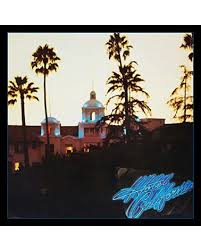
"Welcome to the Hotel California
Such a lovely place (such a lovely place)
Such a lovely face
Plenty of room at the Hotel California
Any time of year (any time of year)
You can find it here"
© Pablo de Ronda
Interesting Links:
Covid-19 is a bastard! Don’t mess with it! A cautionary tale of our times (eyeonspain.com)
Spätzle auf Spanisch - Secret Serrania de Ronda
Knittlingen in Germany, twinned with Spain's Montejaque and Benaoján - Secret Serrania de Ronda
Acknowledgements:
Karl Smallman
Paul Whitelock
www.help-me-ronda.com
www.secretserrania.com
Tags:
A-Level, Abitur, Alan, Allan, Amy, Anton, Bernhard, Bianca, Birgid, Bjorn, Buckley, Carlo, Cheryl, Christine, clinic, Covid-19, Dana, domicilio, Eagles, Egon, Felix, Frank, GCSE, Helen, Hilde, Horst, hospital, Hotel California, Hotel Indiana, Ian, Iona, Iris, Irmhild, Jac, Jeryl, Johannes, Jojo, Jonathan, Jude, Judith, Juliane, Jürgen, Karl Smallman, Katja, Klaus, Knittlingen, Lotta, lockdown, Luxembourg, Lyra, Madita, Marilyn, Markus, Maude, Montejaque, Noah, Pablo de Ronda, pandemic, Paul Whitelock, Rainer, Roger, Ronja, Schreiner, Silke, Simon, Su, Talheim, Tiina, Tom, Torben, Uwe, Villa Indiana, Wilbur
 2
Like
Published at 6:57 PM Comments (0)
2
Like
Published at 6:57 PM Comments (0)
What my car says about me
Tuesday, March 19, 2024
 Back in the day when Pablo de Ronda lived and worked in the UK, he had a car with a cherished number plate or personalised registration. He bought it for himself on reaching his half century. The number was M50 PJW. Back in the day when Pablo de Ronda lived and worked in the UK, he had a car with a cherished number plate or personalised registration. He bought it for himself on reaching his half century. The number was M50 PJW.
At that time, he put it on his “male menopause” car, a Mazda RX-8 sports car with suicide doors and a Wankel rotary engine. He later transferred it to a boring but reliable Ford Focus.
But, what do the car, the plate, and other vehicles he has owned say about him?
M50 PJW
I’d always considered people with a personalised car number plate to be posing “gits” with more money than sense, because a cherished number, as they are known in the trade, can be quite expensive. This industry is possibly the worst example of capitalism I’ve come across.
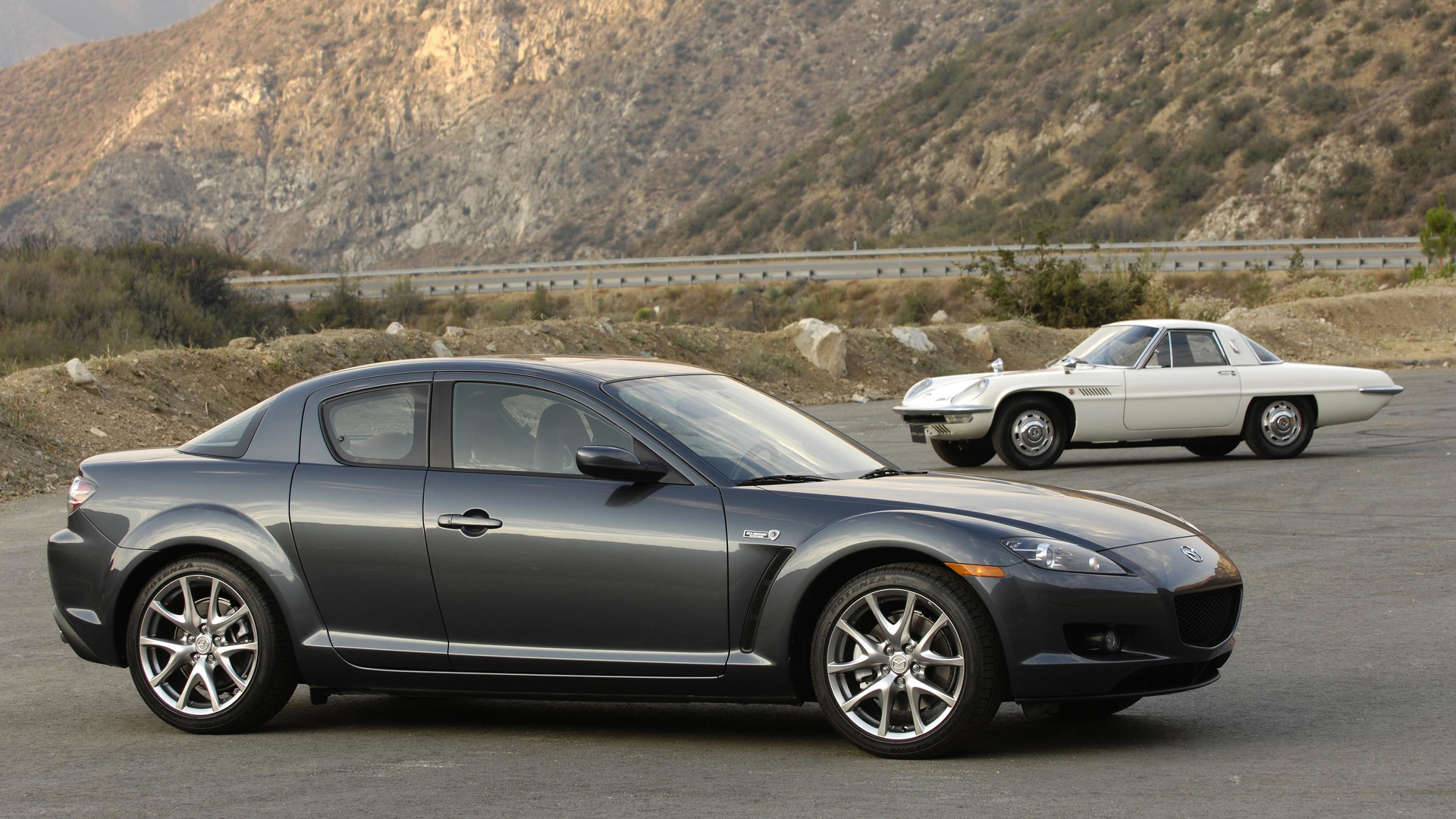 Yet, as I approached the age of 50, I had more money than sense and so I, too, became a posing “git”. I got me a nearly new Mazda RX-8, with hindsight the best car I have ever had. And found that the very apt M50 PJW was available for not too much money. M for Mazda, 50 for my age, and PJW my initials. Yet, as I approached the age of 50, I had more money than sense and so I, too, became a posing “git”. I got me a nearly new Mazda RX-8, with hindsight the best car I have ever had. And found that the very apt M50 PJW was available for not too much money. M for Mazda, 50 for my age, and PJW my initials.
By the way, my wife at the time, Jeryl, had long had a personal plate, JMW 300, her initials and the hope that one day she might be able to aspire to a BMW 3-series. It was her 40th birthday present from me.
My car-owning history
I have owned a fair few cars in my life. Whether they all said something about me, I cannot objectively judge.
The first was a Morris Minor with a split windscreen. I shared it with my mum until I went away to university. Was I a mummy’s boy?
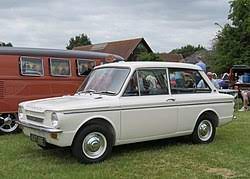 Car number two was a Hillman Imp, which I bought with the proceeds of my student job at Daimer-Benz AG in Stuttgart, Germany. That was a great little car which I ran happily for two years while still a student, until another mummy’s boy from Sheffield, where I was studying for a PGCE, drove into me and wrote “Zoe” off! Car number two was a Hillman Imp, which I bought with the proceeds of my student job at Daimer-Benz AG in Stuttgart, Germany. That was a great little car which I ran happily for two years while still a student, until another mummy’s boy from Sheffield, where I was studying for a PGCE, drove into me and wrote “Zoe” off!
I had to wait a couple of years or so until I had earned enough money from my first job as a teacher to buy another Hillman Imp, followed soon after by a “flashy” Ford Cortina, a popular company car model in the 70s. That turned out to be a “clocked” car.
The dodgy car dealer I bought from, turned out to be a serial cheat, routinely lowering the mileage on all the cars he sold, until Weights and Measures caught up with him. As a result, I received a significant sum in compensation for the sudden loss in value of my Cortina.
Time moved on and I had a Vauxhall Victor, followed by a Vauxhall Viva saloon, the latter possibly the most boring car I have ever had.
 Then, we went foreign for the first time, well only partly. We bought a Honda Accord, which was built in Swindon, under a collaboration agreement between the Japanese giant and British Leyland. That was a great car, a large saloon, which confirmed our status as nouveaux riches. Then, we went foreign for the first time, well only partly. We bought a Honda Accord, which was built in Swindon, under a collaboration agreement between the Japanese giant and British Leyland. That was a great car, a large saloon, which confirmed our status as nouveaux riches.
When I left the classroom after 15 years and became a schools adviser, I decided to buy a brand-new car for the first time. I ended up with our first completely foreign car, a Volkswagen Polo, the “car with the hole in the middle” (viz. Polo Mints advert of that time).
 I soon became bored with that and bought a second-hand Toyoya Celica. Really flashy – it was red and went like the “clappers”. I really was getting “menopausal”! The car proudly displayed a sticker of the catalán flag, because, at the time, I had a strong connection to Barcelona and El Prat de Llobregat. I soon became bored with that and bought a second-hand Toyoya Celica. Really flashy – it was red and went like the “clappers”. I really was getting “menopausal”! The car proudly displayed a sticker of the catalán flag, because, at the time, I had a strong connection to Barcelona and El Prat de Llobregat.
Next up was a fairly elderly Mazda RX-7 which I didn’t really fall in love with, so I upgraded to the nearly-new Mazda RX-8 described above.
Other cars
We’d long had two cars, for we were both working. I was commuting west to St Helens, then Bootle (both Merseyside), and Jeryl in the opposite direction to Salford (Gtr. Manchester), then to Huddersfield and finally to Bradford (both Yorkshire).
With a growing family we decided to get a people carrier, a 7-seater. We were looking for a second-hand, or pre-owned car as the motor trade euphemistically called their used vehicles.
We tried out a Ford Galaxy, a Vauxhall Zafira and an out and out “foreigner”, a Renault Espace. The latter won hands-down: the Ford was too mundane, and the Zafira too small. Besides, the Espace was lilac in colour.
 So, “The Lilac Bus”, named after a collection of eight inter-connected short stories by Irish writer Maeve Binchy (1984) and made into a TV film in 1990 by Irish Director Giles Foster, was ours. So, “The Lilac Bus”, named after a collection of eight inter-connected short stories by Irish writer Maeve Binchy (1984) and made into a TV film in 1990 by Irish Director Giles Foster, was ours.
“The Lilac Bus” confirmed my reputation as a bit of a “show-off”, but I didn’t care and nor did the grateful parents of our kids’ friends, as we ended up driving them everywhere, to drama club, dance classes, karate and swimming. And later when they started going clubbing to “Mr Smith’s”, the infamous Warrington nightclub of the 90s.
Following that, we went back to a VW, this time their Sharan model, their 7-seater. Not flashy at all, it was dark grey in colour. A great buy! Jeryl retained it for years after our divorce (see below).
Cars post-divorce and into retirement
Jeryl and I divorced in 2005 around the same time I was made redundant and took early retirement.
I moved to Bryn-a-Maen in North Wales to live with new “squeeze” Maude. I still had my Mazda RX-8, which I was still enjoying, until I realised it was impractical for the mountainous are where we lived.
It was time to return to boring automation, I got an ex-demonstrator Ford Focus, which was much more practical, and fitted my new cloth cap, pensioner image. This car too was dark grey.
 After leaving Maude, I moved in with my mum in Thelwall (Warrington) for a good while until I bought a house in nearby Latchford as a “doer-upper”. It was a Victorian detached house down on its luck. I needed a van. I opted for another Vauxhall, this time a Vivaro. After leaving Maude, I moved in with my mum in Thelwall (Warrington) for a good while until I bought a house in nearby Latchford as a “doer-upper”. It was a Victorian detached house down on its luck. I needed a van. I opted for another Vauxhall, this time a Vivaro.
I sold the Focus. After all, why does a solo bloke need two vehicles?
Around that time (September 2008) I met Rita, a German living in Montejaque, near Ronda (Málaga) where I owned an apartment.
We hit it off straightaway and after several visits to each other’s homelands and respective families I emigrated to live with her in Casa Rita.
We wed in 2010 and decided we needed to find another place to live, with easy access by car, lots of land and a pool, none of which Casa Rita offered.
By February 2011 we had our dream home, Villa Indiana in Fuente de la Higuera (Ronda). I filled the Vivaro with personal items and drove to Talheim (Baden-Wuerttemberg, Germany) with Rita to collect some things of hers that were in storage there.
We survived a busted air filter and then headed for our new home in southern Spain with overnight stops in Limoges (France) and Alicante (Spain).
Cars in Spain
Settled in our new home in Spain, we had two vehicles, the Vauxhall Vivaro and Rita’s Peugeot 206 cabriolet. The Vivaro let me down again (gearbox).
To avoid having to get it re-registered onto Spanish plates, I parked it offroad for a while, until Rainer, a German friend, made me an offer I couldn’t refuse and he took it off to Germany, where he christened it “Der Engländer”. His “missus”, Iris, drove it happily for many years, although it has now gone to the “big graveyard in the sky”.
I bought the Seat Leon of the previous owners of our new home and ran it until 2020 when I bought a house to do up in Montejaque and needed a van again.
 I bought a VW Transporter from a dodgy English neighbour (although I didn’t know that at the time) and sold the Leon. I bought a VW Transporter from a dodgy English neighbour (although I didn’t know that at the time) and sold the Leon.
Within a year, said dodgy neighbour, had incinerated the Transporter (allegedly) and wrote it off.
Carless, I bought a nearly new Peugeot 2008 from a dealer in Cádiz.
A year later Rita’s Peugeot 206 self-combusted (or was it arson again by Julian, the dodgy neighbour?)
We eventually found a replacement in Madrid, this time a Peugeot 207 cabriolet, in immaculate condition. We bought it unseen over the phone, then went on the train for a long weekend in the Spanish capital. Two nights there and another in Toledo on the way back made it a super way to buy a car!
8130 KVV
This photo of the rear of my Peugeot 2008 tells you a lot about my current life.
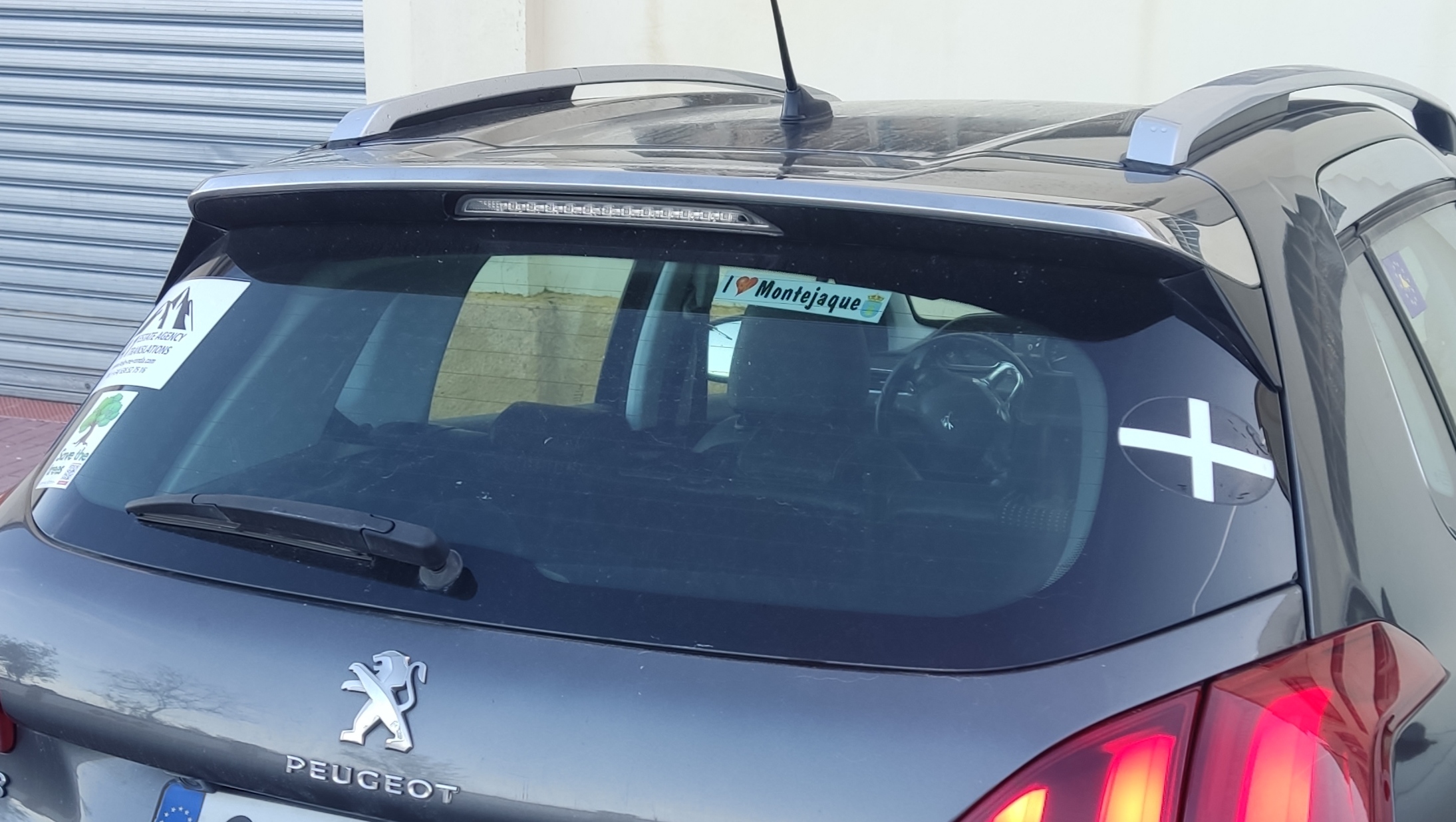
A1
A1 is my company.
Included in it are A1 Inmobiliaria (Estate Agency) and A1 Translations.
A1 INMOBILIARIA - Real Estate - A1 INMOBILIARIA Real Estate (a1-inmobiliaria-real-estate.com)
www.help-me-ronda.com
Cornish flag
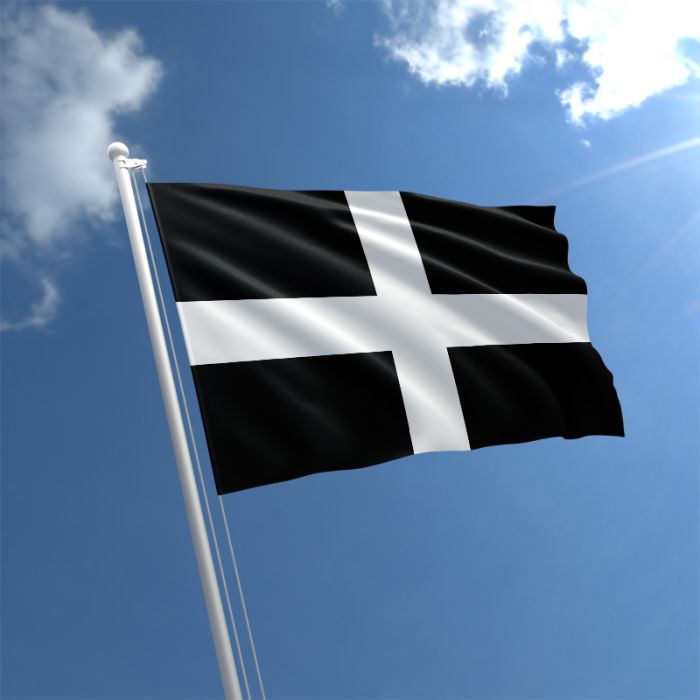 We spent a great week in Cornwall in February 2022 as guests of my brother Simon and his wife Marilyn, who own a "timeshare" there. We did some great things, eg St Michael's Mount, an open air sculpture park, Falmouth, Fish and Chips on a park bench. We spent a great week in Cornwall in February 2022 as guests of my brother Simon and his wife Marilyn, who own a "timeshare" there. We did some great things, eg St Michael's Mount, an open air sculpture park, Falmouth, Fish and Chips on a park bench.
In fact we ate great food the whole time, in restaurants, pubs, everywhere. Rita declared that it was the first time in England that she enjoyed all the food, even the Fish and Chips!
European Union flag
 The worst “crime” committed by the UK government based on mis-information and lies perpetrated by the leave lobby leading to a narrow margin in favour of “Brexit”. The worst “crime” committed by the UK government based on mis-information and lies perpetrated by the leave lobby leading to a narrow margin in favour of “Brexit”.
“The chickens are already coming home to roost”.
“I  Montejaque” Montejaque”
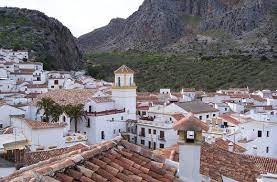 Arguably one of the prettiest of the pueblos blancos in Málaga province. It’s where Rita chose to live when she emigrated 18 years ago. It’s where I moved to when we met 16 years ago. Arguably one of the prettiest of the pueblos blancos in Málaga province. It’s where Rita chose to live when she emigrated 18 years ago. It’s where I moved to when we met 16 years ago.
It’s also where I bought a house to renovate in 2020.
Rita still has Casa Rita and I still own Casa Real, although both are for sale.
CASA REAL, MONTEJAQUE - Large modernised traditional village house in beautiful pueblo blanco - 149.000€ - Help me, Ronda (help-me-ronda.com)
CASA RITA, MONTEJAQUE - An immaculate fully renovated 3-bed, 3-bath property - 200,000€. - Help me, Ronda (help-me-ronda.com)
Peugeot
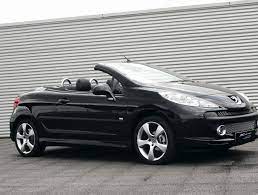 Well, they must be OK, despite being French (joke, honest!). Rita has had two and I’ve had, and still have, one, my Peugeot 2008. Well, they must be OK, despite being French (joke, honest!). Rita has had two and I’ve had, and still have, one, my Peugeot 2008.
According to many local Spaniards, the best cars are German (Mercedes, Audi and Volkswagen); then come Peugeots, which are a bit cheaper.
Strangely, Seat and Skoda are not very highly regarded, despite being part of the Volkswagen group. I had a Seat Leon, when I first came to Spain to live, and it was excellent. And when we visit Germany, we have use of Rita’s daughter’s second car, a Skoda. It’s fine.
Save the Trees
This is a campaign in Benaoján (Málaga) to save hundreds of trees that the authorities wish to hack down to make way for a water purification plant. The point is, there are better sites for this necessary upgrade, which would entail less environmental damage.
Conclusion
“What my car says about me” was my title for this article. I think most of the cars I have owned did say something about me: eg, how I was feeling at the time; the state of my finances and what I could afford; what I was doing (eg renovating houses); and pre- and post-divorce during my male menopause phase.
© Pablo de Ronda
Links:
Paul Whitelock
Wikipedia
www.help-me-ronda.com
Acknowledgements:
Karl Smallman
Peugeot
TurboSquid
ww.help-me-ronda.com
www.secretserrania.com
Tags:
8130 KVV, A1 Inmobiliaria, A1 Translations, Alicante, Audi, BMW 3-series, Baden-Wuerttemberg, Barcelona, Benaoján, Bootle, Bradford, Brexit, British Leyland, Bryn-a-Maen, cabriolet, Cádiz, capitalism, Casa Real, Casa Rita, cherished number, Daimer-Benz AG, “Der Engländer”, El Prat de Llobregat, European Union, Ford Cortina, Ford Focus, Ford Galaxy, France, Fuente de la Higuera, German, Giles Foster, Gtr. Manchester, help-me-ronda.com, Hillman Imp, Honda Accord, Huddersfield, JMW 300, Jeryl, Lilac Bus, Limoges, M50 PJW, M50 PJW, Madrid, Maeve Binchy, Málaga, male menopause, Maude, Mazda RX-7, Mazda RX-8, Mercedes, Merseyside, Montejaque, Morris Minor, Mr Smith’s, North Wales, Pablo de Ronda, personalised car number plate, personalised registration, Peugeot, Peugeot 2008, Peugeot 206, Peugeot 207, pueblos blancos, Rita, Ronda, St Helens, Salford, Save the Trees, SEAT, SEAT Leon, Sheffield, Skoda, Spain, Stuttgart, suicide doors, Swindon, Talheim, Thelwall, Toledo, Toyoya Celica, Vauxhall Victor, Vauxhall Viva, Vauxhall Vivaro, Vauxhall Zafira, Villa Indiana, VW, VW Transporter, Volkswagen, Volkswagen Polo, Wankel rotary engine, Warrington, Weights and Measures, Yorkshire, Zoe
 0
Like
Published at 11:03 PM Comments (0)
0
Like
Published at 11:03 PM Comments (0)
Lots of Carmens
Tuesday, March 5, 2024
By Pablo de Ronda
 Carmen is a common given name here in Spain. I have known a few over the course of my 50-plus-years relationship with this magnificent country. From my first visit aged 20, through subsequent holidays and work trips to the last 15 years as a resident of the Serranía de Ronda in Andalucía. Carmen is a common given name here in Spain. I have known a few over the course of my 50-plus-years relationship with this magnificent country. From my first visit aged 20, through subsequent holidays and work trips to the last 15 years as a resident of the Serranía de Ronda in Andalucía.
Carmen Bujanda
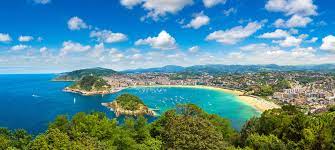 The first of my “Carmens” was a Basque, a colleague when I worked as a tourist guide in San Sebastián (Gipuzkoa) in my early 20s. The first of my “Carmens” was a Basque, a colleague when I worked as a tourist guide in San Sebastián (Gipuzkoa) in my early 20s.
“Bufanda” (scarf), as we were wont to call her, was very slim, very dark and very attractive. Unfortunately, she had a novio, who was very big and strong, so she was off-limits.
Carmen the Dancer
Still in San Sebastián in the early 70s, this Carmen was the gorgeous flamenco dancer who performed for our clients during one of the excursions we sold.
 Carmen was only 18 but already had twin girls. The story goes that she had wanted to delay starting a family, but back then Spain was still a devoutly Roman Catholic country controlled by the not-yet-dead General Franco. Carmen was only 18 but already had twin girls. The story goes that she had wanted to delay starting a family, but back then Spain was still a devoutly Roman Catholic country controlled by the not-yet-dead General Franco.
No form of contraception was available in Spain back then, not even condoms. So, she asked a friend, who used to go frequently to nearby France, to smuggle something in for her. He brought her the Pill, yet she still got pregnant. Apparently Carmen thought the pills were pessaries …..!
Other “Carmens”
As time has passed, I have known and forgotten many a Carmen. However, in the last quarter of a century, from 2000 onwards, there have been several Carmens on my radar.
Carmen "Paprika"
I first met this fluent English-speaking señora nearly a quarter of a century ago when I first came to the Barrio San Francisco in Ronda. I had two properties in the barrio and lived there for a time after I retired in 2005.
Paprika was pareja (partner) of German Martin who has lived in Ronda for many a year, after leaving hometown Frankfurt am Main for Andalucia.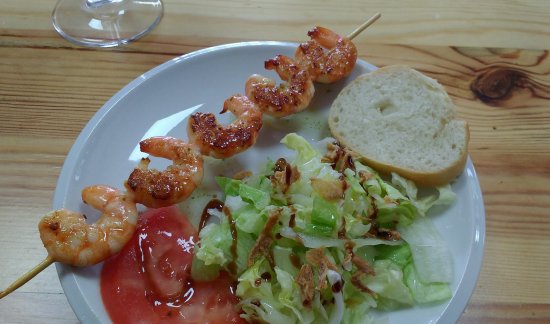
Paprika appeared in the Jamie Oliver documentary "Jamie Does Andalucia" (Channel 4, 2009) that featured Ronda and Benaojan. At the time she was "landlady" of Bar Ambigu, where a segment was filmed.
I popped into the Bar recently, but she no longer works there. According to locals she is still around in Ronda and still with her Frankfurter, Martin.
View Carmen "Paprika" with Jamie Oliver here: Jamie Does Andalucia, Spain (youtube.com)
“Carmen”, the comic opera and film
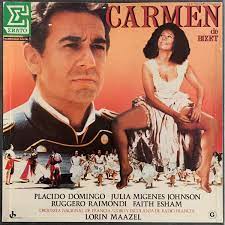 “Carmen” is an opera in four acts by the French composer Georges Bizet. The libretto was written by Henri Meilhac and Ludovic Halévy, based on the novella of the same title by Prosper Mérimée. The opera was first performed by the Opéra-Comique in Paris on 3 March 1875, where its breaking of conventions shocked audiences. “Carmen” is an opera in four acts by the French composer Georges Bizet. The libretto was written by Henri Meilhac and Ludovic Halévy, based on the novella of the same title by Prosper Mérimée. The opera was first performed by the Opéra-Comique in Paris on 3 March 1875, where its breaking of conventions shocked audiences.
The opera was adapted for a 1984 French-Italian film directed by Francesco Rosi. Julia Migenes stars in the title role, and Plácido Domingo as Don José.
The film premiered in France on March 14, 1984, and in the USA on September 20 of that year. In 1985, the film was nominated for the Golden Globe Award for Best Foreign Film.
Much of the film was shot in Ronda (Málaga) where I live, and a local bar in the Barrio Padre Jesús contains photos of the shoot, which include a very young and very slim Placido Domingo, later to become famous as one of The Three Tenors, alongside Luciano Pavarotti and José Carreras.
Carmen Myers
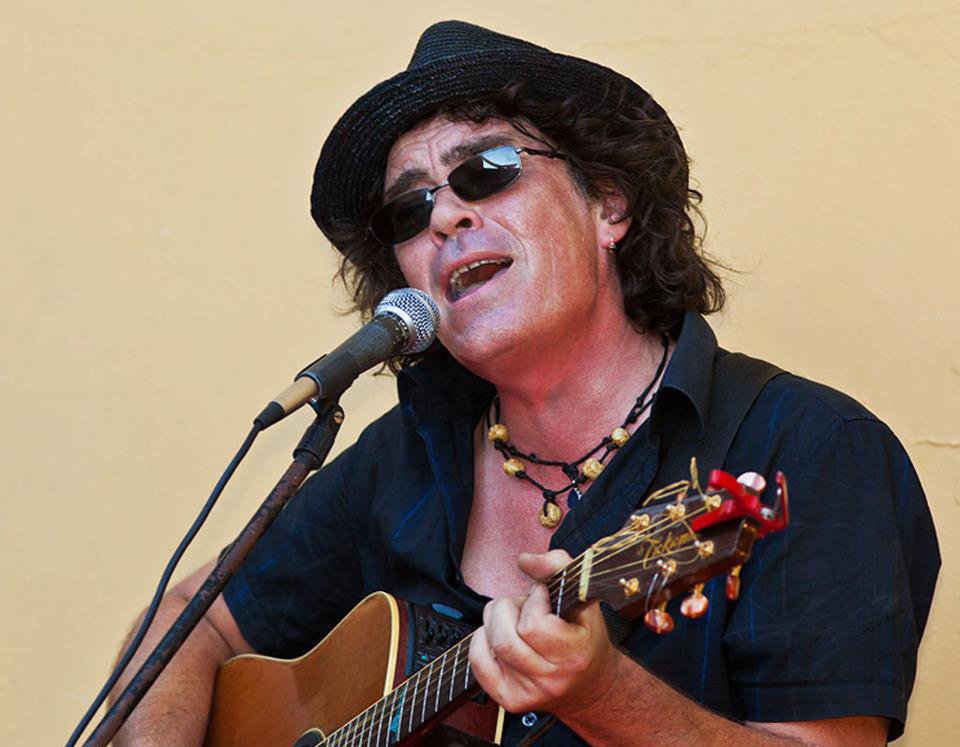 This half-Spanish, half-English lady is the wife and manager of Marcus Myers, former guitarist for the English pop duo of the 1990s and early 2000s Alisha’s Attic. The two singers were sisters Shelly and Karen Poole, whose father is Brian Poole of 1960s group Brian Poole and the Tremeloes. This half-Spanish, half-English lady is the wife and manager of Marcus Myers, former guitarist for the English pop duo of the 1990s and early 2000s Alisha’s Attic. The two singers were sisters Shelly and Karen Poole, whose father is Brian Poole of 1960s group Brian Poole and the Tremeloes.
Carmen is a great singer in her own right. I remember a super rendition by Carmen and Marcus of The Beatles song “In My Life" at the funeral in 2023 of our mutual friend Guy Hunter-Watts, 64, the author of 12 books about walking in southern Spain.
Two Carmens in a week!
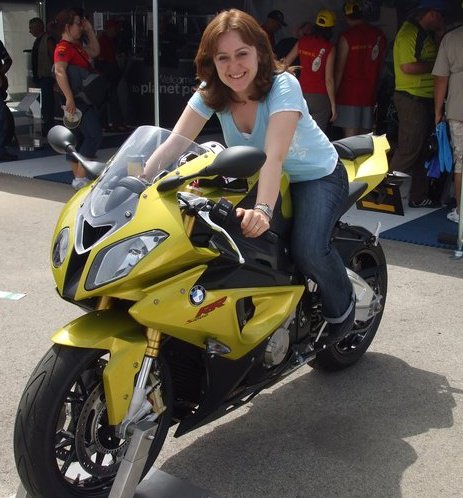 This past week I have come across two Carmens. This past week I have come across two Carmens.
The first was an amateur production of the opera “Carmen” by Bizet (see above) in our local theatre in Ronda. We decided to go. The theatre was packed, but unfortunately the production was not very good, so we left at the interval and went for dinner instead.
Then, yesterday, I showed an American client who is looking to buy a house around here, one of the “houses on my books” (I dabble in house sales as a corredor, or unofficial estate agent).
My contact to arrange a viewing was Carmen, the lawyer daughter of retired Seville-based doctor Rafael and his retired teacher wife, also Carmen.
Carmen, daughter, lives and works in Ronda. As it turned out we had met before. She is the lawyer for a local electricity provider who tried to overcharge me for a house re-wire.
It’s a small world (el mundo es un pañuelo).
© Pablo de Ronda
Links:
Guy Hunter-Watts, author and walking guide, RIP (eyeonspain.com)
VIDEO: Three Jamies - including celebrity TV chef Jamie Oliver - in one day! (secretserrania.com)
www.marcusmyersmusic.com
www.help-me-ronda.com
Acknowledgements:
Carmen Narvaez
Paul Whitelock
Discogs
Wikipedia
www.secretserrania.com
Tags:
Alisha's Attic, Beatles, Benaojan, Bizet, Brian Poole, Brian Poole and the Tremeloes, Carmen, Carmen Bujanda, Carmen Myers, Carmen Narvaez, condom, contraception, Cortes de la Frontera, bufanda, dancer, Franco, Guy Hunter-Watts, "In My Life", "Jamie does Andalucia", Jamie Oliver, Jose Carreras, Karen Poole, Luciano Pavarotti, Marcus Myers, Montecorto, Pablo de Ronda, "Paprika", Paul Whitelock, Placido Domingo, Prosper Mérimée, Rafael Narvaez, Ronda, San Sebastian, Shelly Poole, Spain,
 3
Like
Published at 7:35 AM Comments (0)
3
Like
Published at 7:35 AM Comments (0)
Spis lige brød til
Wednesday, February 28, 2024
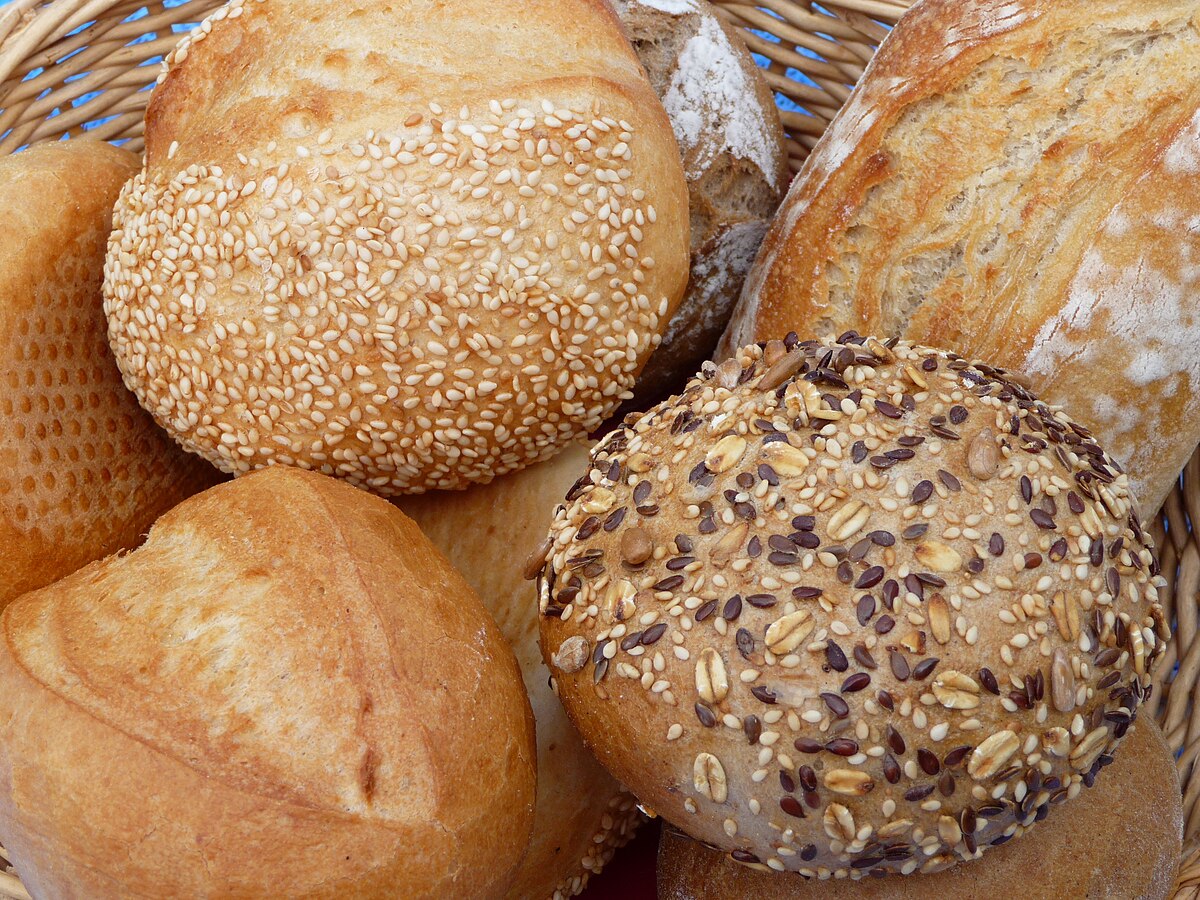 ‘Spis lige brød til’ is Danish and translates to ‘Have some bread with that’. It is a phrase usually used to say take a breath to someone who has worked hard for something difficult. ‘Spis lige brød til’ is Danish and translates to ‘Have some bread with that’. It is a phrase usually used to say take a breath to someone who has worked hard for something difficult.
For the purpose of this article, I am sticking to the literal meaning:
‘Have some bread with that’
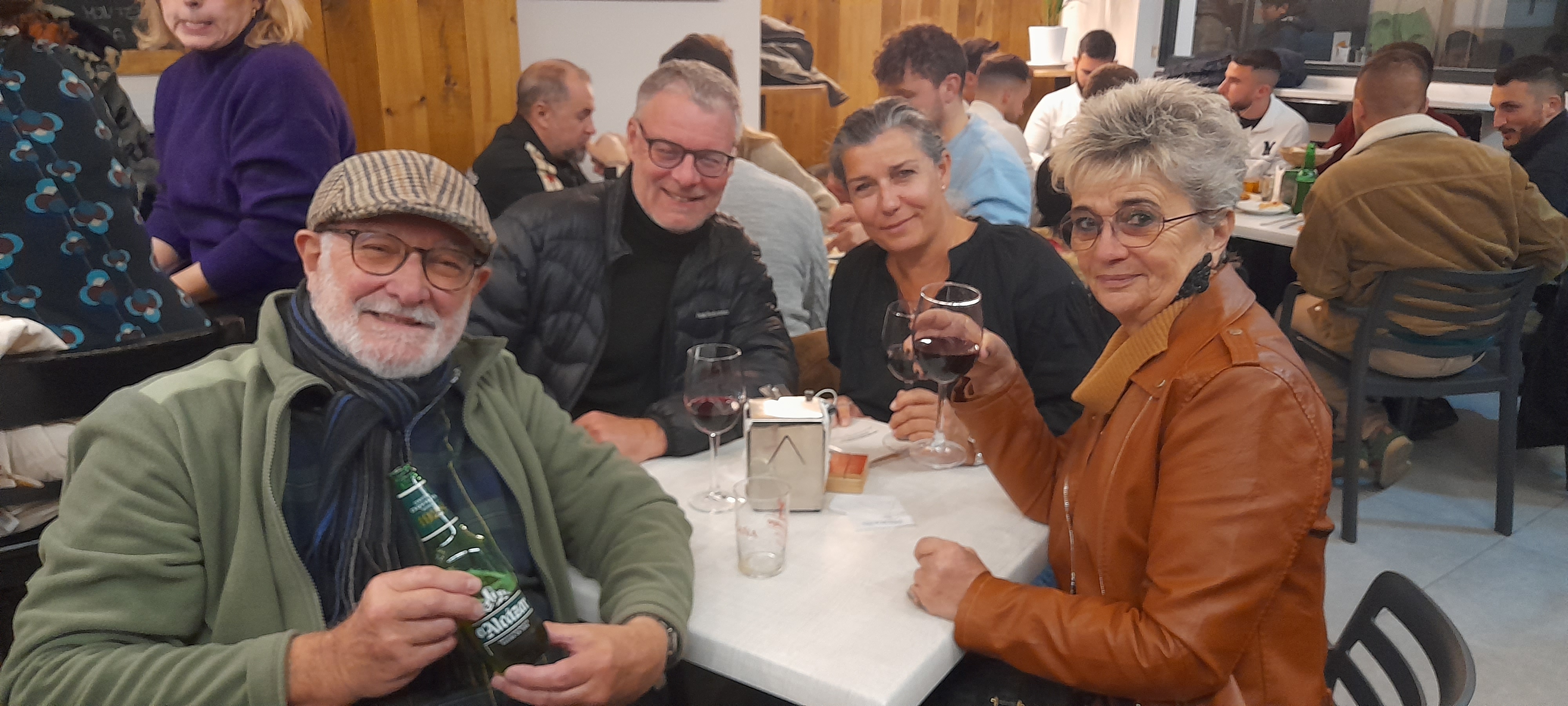 On the eve of Andalucia Day, my wife Rita and I went de tapeo to Ronda with a Danish couple, Claus and Ellen. This recently retired couple from Copenhagen, are touring Spain and Portugal for two months. They drove from Denmark through Germany and France and entered Spain via Catalonia. They are "great Danes"! Boom! Boom! On the eve of Andalucia Day, my wife Rita and I went de tapeo to Ronda with a Danish couple, Claus and Ellen. This recently retired couple from Copenhagen, are touring Spain and Portugal for two months. They drove from Denmark through Germany and France and entered Spain via Catalonia. They are "great Danes"! Boom! Boom!
I met them at my local, Hotel Ronda Valley (formerly Hotel Don Benito) on the Seville road out of Ronda. They were staying for two nights before heading south to Tarifa, then Cadiz, before entering Portugal.
We struck up an immediate friendship, as a result of which I offered to give them a tapas experience in Ronda. Rita came too. She found Claus and Ellen enchanting.
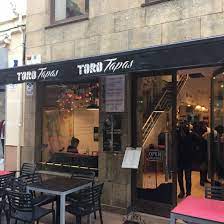 When we arrived in Ronda, we parked on the carpark at the old Guardia Civil barracks and walked into town. First stop was Toro Tapas, on Calle La Bola (Espinel) where, despite it being very busy, we got a nice table just inside. When we arrived in Ronda, we parked on the carpark at the old Guardia Civil barracks and walked into town. First stop was Toro Tapas, on Calle La Bola (Espinel) where, despite it being very busy, we got a nice table just inside.
We ordered several tapas: rabo de toro, chorizo al tinto, tosta de salmón and patatas bravas. Our Danish guests and Rita chose a nice Ronda wine, Lunares, while I stuck to Estrella Galicia beer.
Our lingua franca was English (theirs was nearly as good as mine!) and the conversation flowed: they were interested in us and we in them.
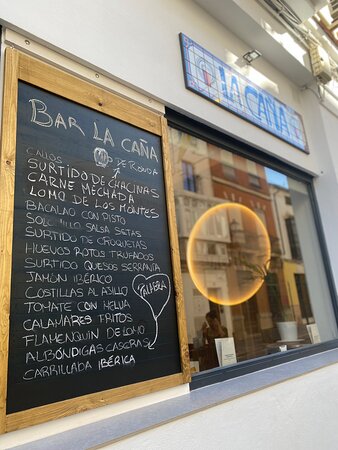
Next stop was the newish bar, La Caña. Guess who were there; our good friends Michael (Irish), Malcolm (English) and Elaine (Scottish), all three long-term residents of Ronda. Michael is a translator, teacher and poet; Elaine is a successful painter and jewellery maker and Malcolm a retired estate agent.
Our foursome grabbed the last available table and were attended by the lovely Laura. Here I chose a beer from Jaén, El Alcázar, while my companions went for another Ronda wine Niño León.
Foodwise it was albondigas, chorizo al tinto (again!), bollo de filete and bollo de calamar both con mojo picón.
After I had a brief chat with a young couple, Maria from Cataluña and Ashley from England, who were visiting with work, we decided to head back to the carpark and get one last round at one of our favourite bars, Bodega San Francisco. It was heaving but we found a table.
 Here, the wine connoisseurs took another Ronda wine, this time from Chinchilla. I had an Alhambra 1925 from Granada. Here, the wine connoisseurs took another Ronda wine, this time from Chinchilla. I had an Alhambra 1925 from Granada.
We ordered our favourites: aguacate stuffed with seafood and rollito de salmón. Mmmm!
Then, it was back to the valley in their luxury hybrid BMW 504e, fond farewells and off to bed.
© Pablo de Ronda
Further reading:
Elaine Moore All about Elaine
LOCAL AUTHORS - Help me, Ronda (help-me-ronda.com)
Days of (Ronda) Wine… and Roses - Secret Serrania de Ronda
Acknowledgements (Photos):
Ashley Brocklehurst
Trip Advisor
Tags:
aguacate, albondigas, Alhambra 1925, Andalucia, BMW 504e, Bodega San Francisco, bollo de calamar, bollo de filete, Chinchilla, chorizo al tinto, Claus, Copenhagen, Denmark, El Alcazar, Ellen, Estrella Galicia, Granada, Hotel Ronda Valley, Jaen, La Caña, Lunares, mojo picón, Niño Leon, patatas bravas, rabo de toro, rollito de salmón, tapa, Toro Tapas, tosta de salmón
 2
Like
Published at 10:35 AM Comments (0)
2
Like
Published at 10:35 AM Comments (0)
Spam post or Abuse? Please let us know
|
|